Skoda Superb 2025 review
Skoda is keeping skin in the large-car game with a new-generation Superb – and in many ways it lives up to its immodest badge
The large car still isn’t completely dead yet — at least if you have upwards of $65 grand available to fork out.
Skoda is one of the few brands keeping faith with the dying segment, continuing its presence with a new, fourth-generation Superb — again available as either a liftback sedan or wagon.
Families and executives aren’t its only customer targets; the Czech brand is also pitching its flagship model at police forces who have long been forced out of their staple Falcons and Commodores.
The reality of sales expectations, however, is revealed with the repeat of a single-spec Superb Sportline.
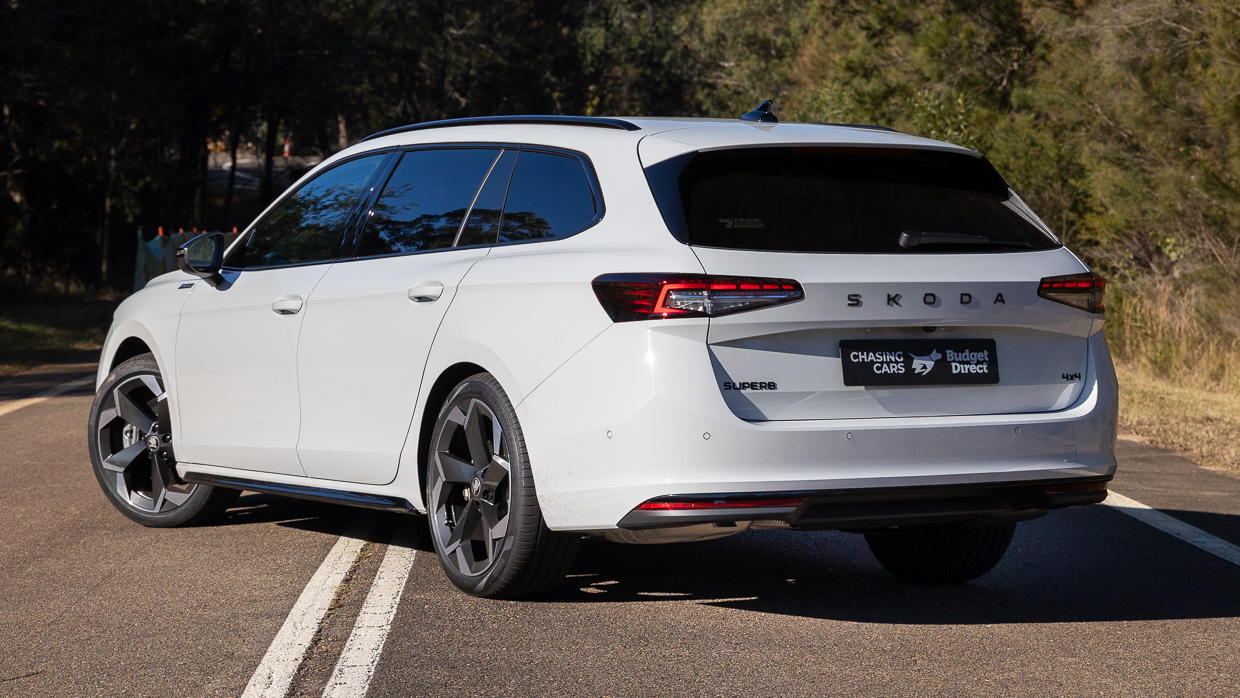
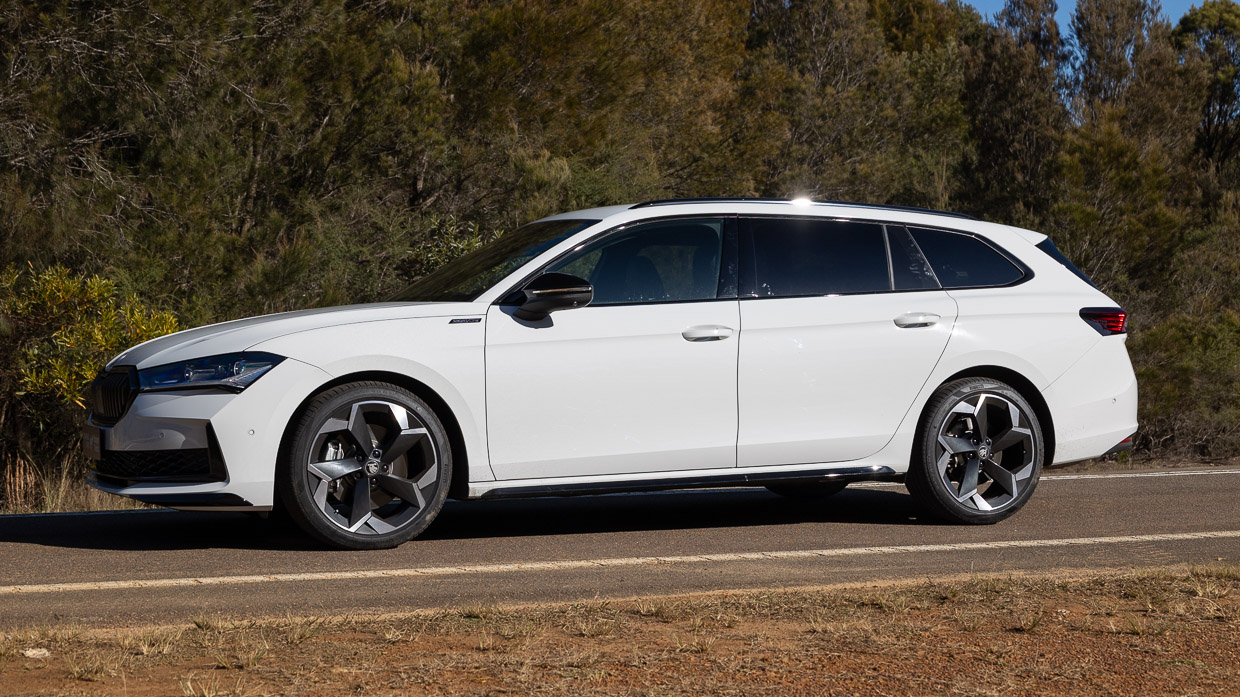
Large wagons are even rarer, though; the Superb estate’s biggest rivals are high-spec midsized SUVs, and you could also include Skoda’s own seven-seater SUV, the Kodiaq.
Our review focuses on the Superb wagon, which we drove away from the media launch to bring you a full road test based on multiple days of testing.
What are the Superb’s features and options for the price?
The new Superb sits at the crossover point of the under/over $70K mark, priced from $67,990 before on-road costs for the liftback sedan and from $69,690 for the wagon.
That corresponds to (Sydney) driveaway pricing of $73,990 and $74,990, respectively, for the sedan and wagon.
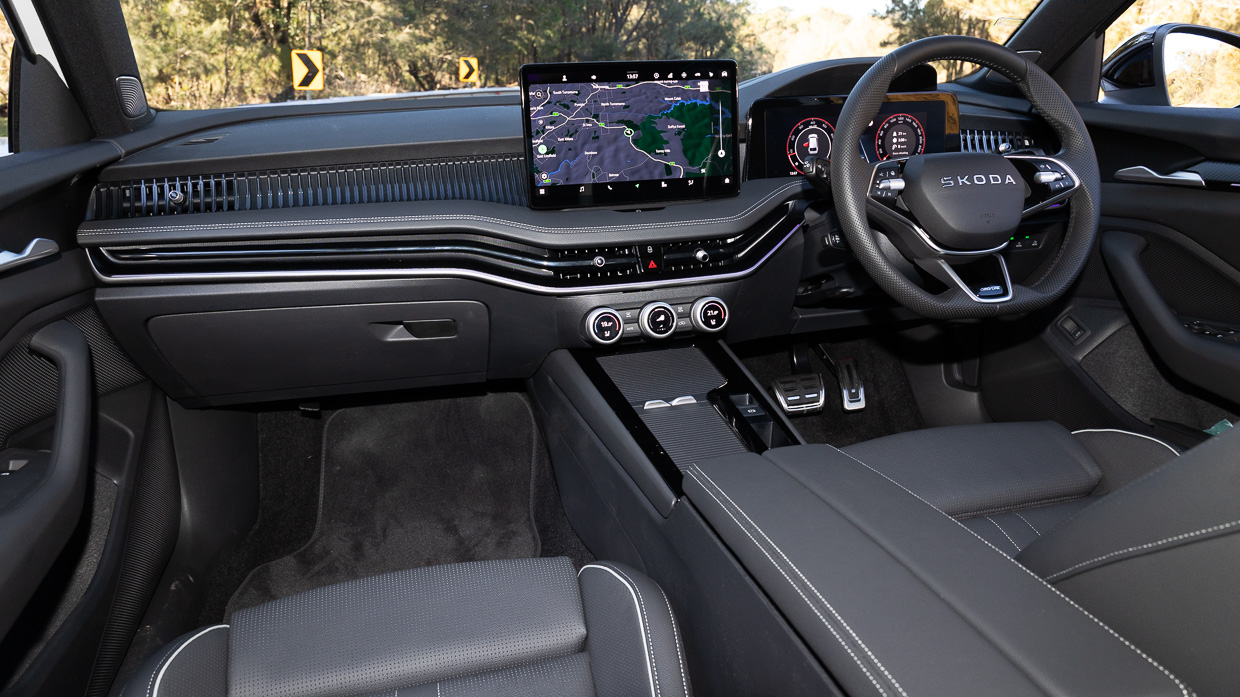
The RRP is an increase of $2400 over the previous model, though Skoda says the new Superb adds standard features with a value it places at $8500.
New features include front seats with heating, ventilation and massage functions; head-up display; regular metallic paint is now standard; and expanded driver-assist systems include vehicle-exit warning, emergency steering assist, traffic-sign recognition, and Travel Assist semi-autonomous steering.
Other notable inclusions are adaptive dampers, 19-inch alloy wheels, ‘Matrix’ LED adaptive headlights, 13.0-inch infotainment touchscreen, 10.0-inch digital driver cluster, heated steering wheel, dual-level customisable LED interior lighting, tri-zone climate control, wireless smartphone connectivity, and a 12-speaker Canton audio system.
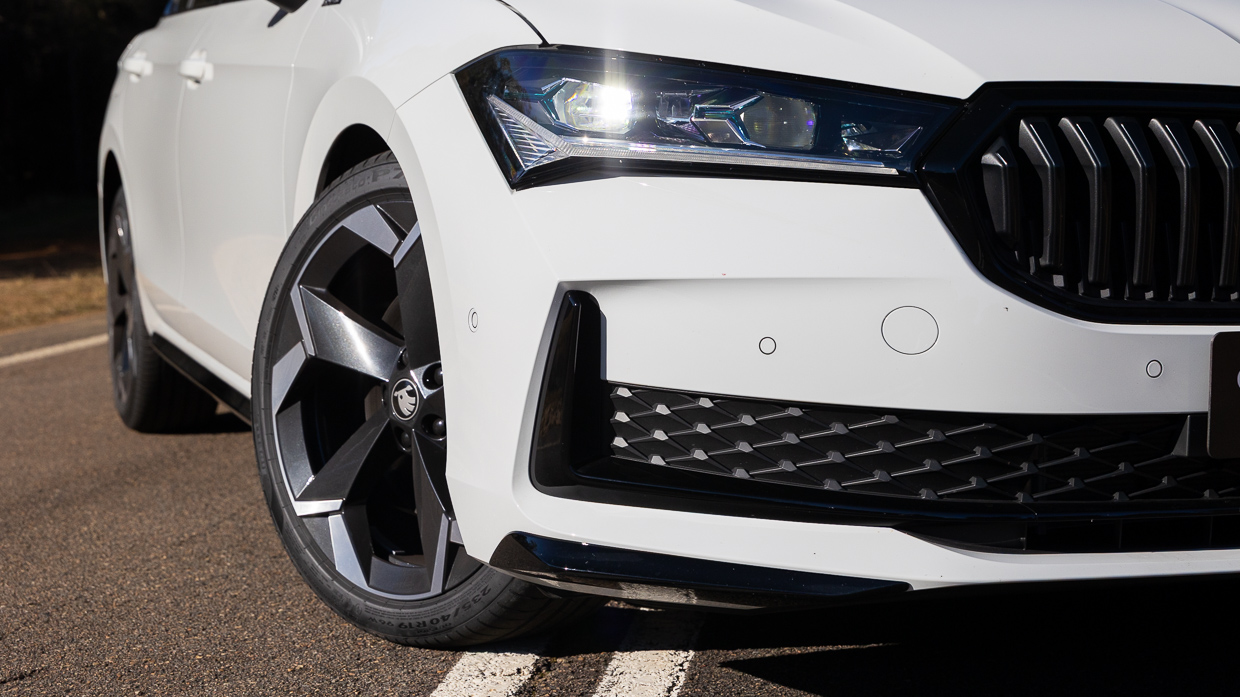
The main options are a $1900 panoramic sunroof and ‘premium’ Carmine Red paint that costs $770.
You are also getting even more metal for the money now, as the Superb has stretched 43mm to 4.9 metres in length.
The Superb is again offered in Sportline trim only, which brings various gloss-black finishes to exterior elements including the grille, mirror caps and, for the wagon, roof rails.
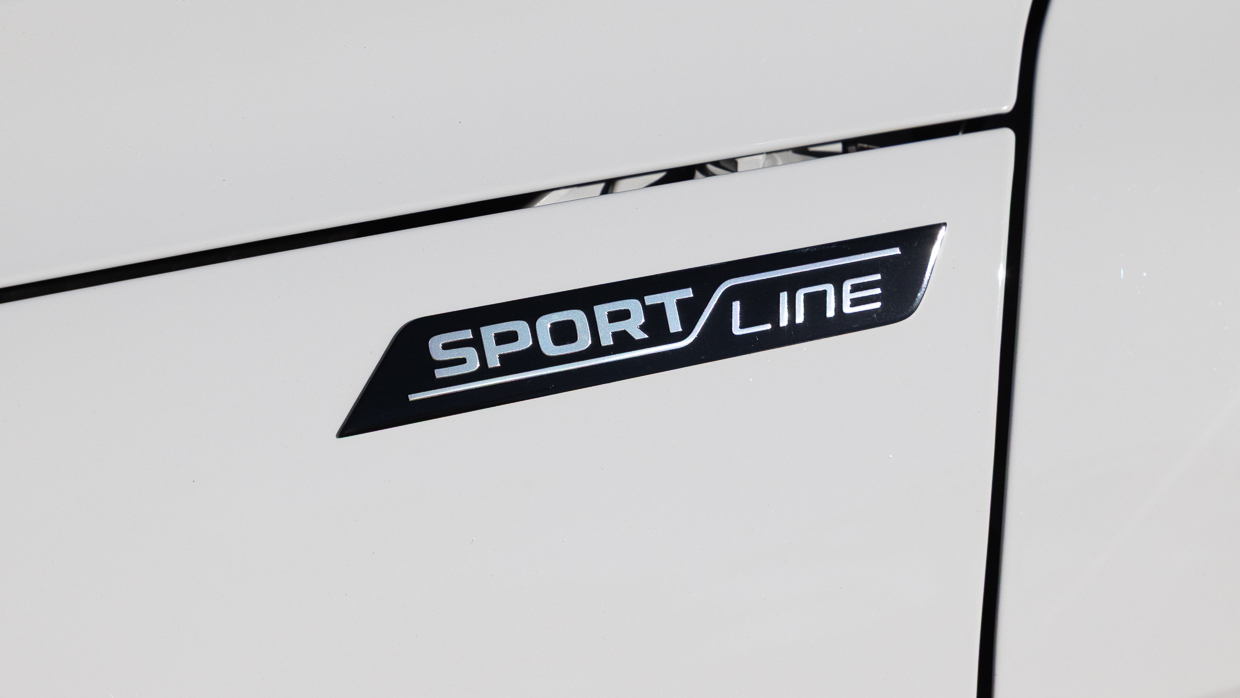
Although a Honda Accord e:HEV RS sedan is priced lower at $64,990, a standard panoramic roof is its only main equipment advantage where the Superb sedan counters with more features, a temp spare wheel, and a longer warranty.
A Lexus ES base model is similarly priced ($74,160) to the Skoda yet the Superb is equipped more like the range-topping ES Sports Luxury that’s about $89,500 driveaway.
What is the Superb’s interior and tech like?
The Superb’s refreshed interior shares plenty of design elements with both the Kodiaq SUV and facelifted Octavia, though it also goes its own way in some areas — including an upper-dash design that seemingly mimics Skoda’s multi-bar ‘moustache’ grille and cleverly integrates the side vents.
As with the recently launched Kodiaq, the transmission selector is now a stalk behind the wheel rather than a conventional gearlever.
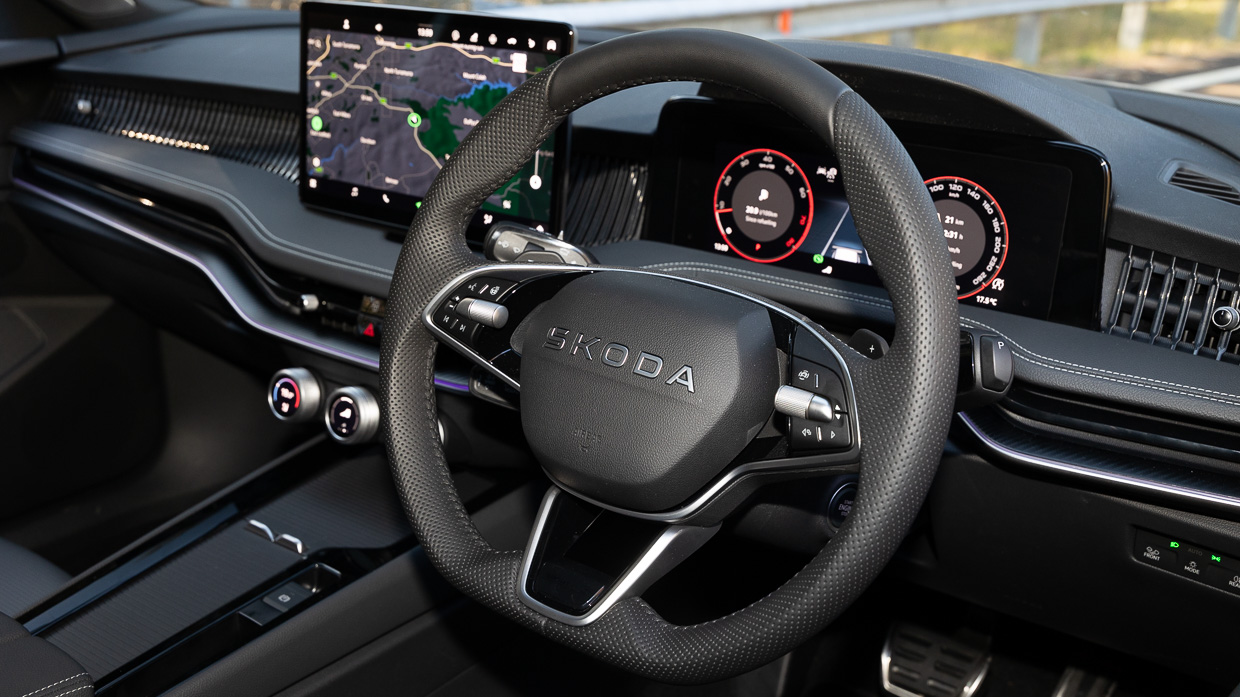
This frees up space for a more practical centre console. The front section features dual, opposite opening lids that access a smartphone (cooled) fast-charging tray and cupholders; the ‘jumbo box’ cubby is quoted with a 5.5-litre capacity and includes a 12-volt socket plus a clip-on tray and moveable lengthwise storage for small items such as Skoda’s touchscreen cleaner block.
These are just the first examples of an abundance of thoughtful little touches found in the Superb. As per Skoda tradition, an umbrella is secreted into the side of the driver’s door.
The generously sized door pockets also take thick drinks bottles.
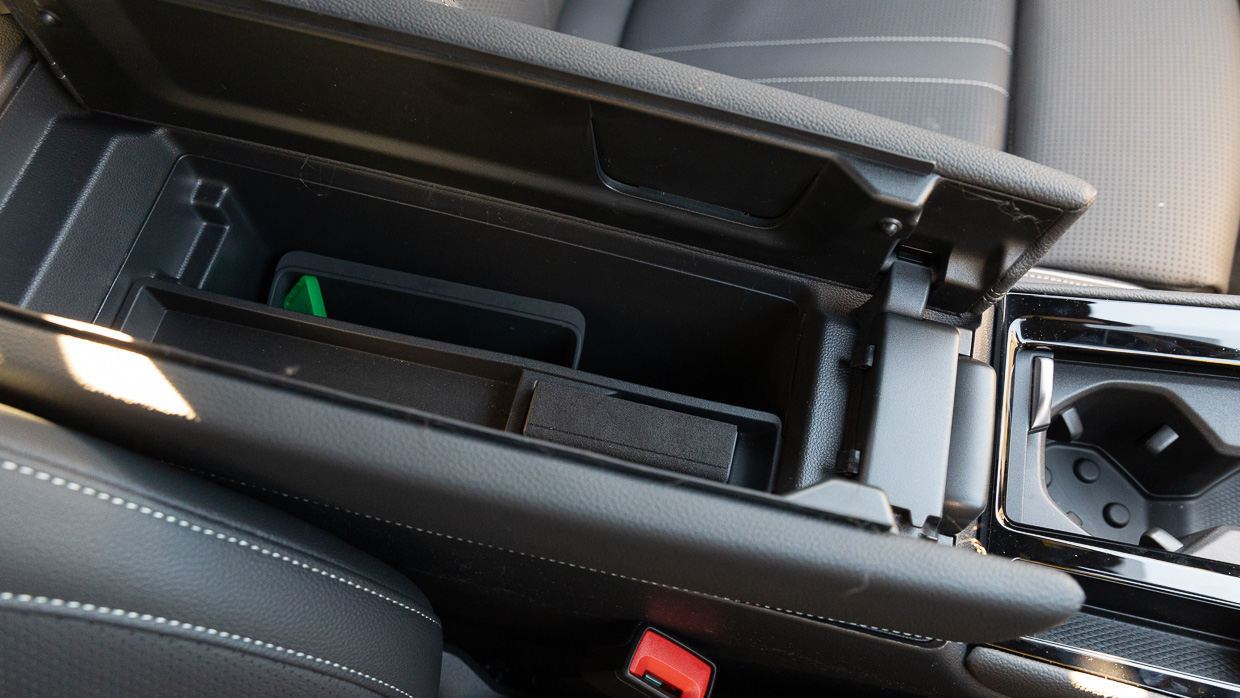
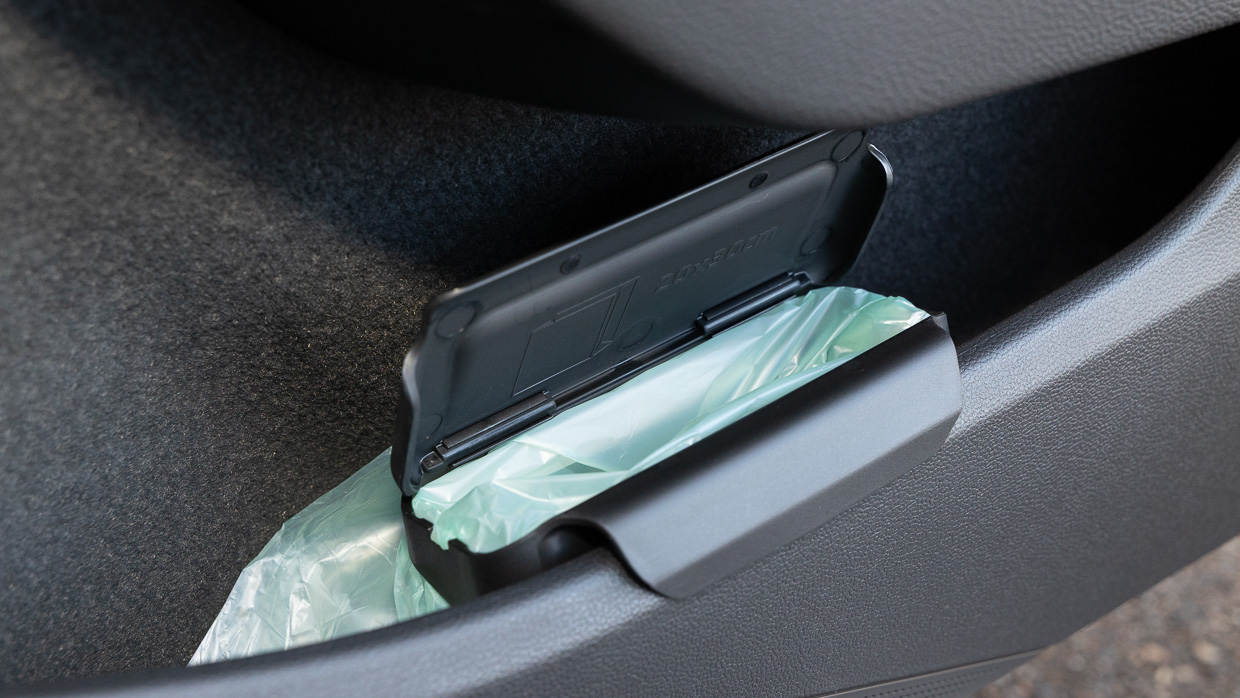
A head-up display is a first for the Superb, complementing a vastly improved infotainment system that brings not only a larger screen (13 inches v previous 9.2in display) but also better graphics, better clarity, and a generally more intuitive interface.
The standard Canton audio provides excellent sound (and superior to that of the Bose system in our long-term Hyundai Santa Fe Calligraphy).
A digital driver’s cluster is fully configurable via two buttons on the right side of the steering wheel, including the option for full-screen navigation (though factory nav only).
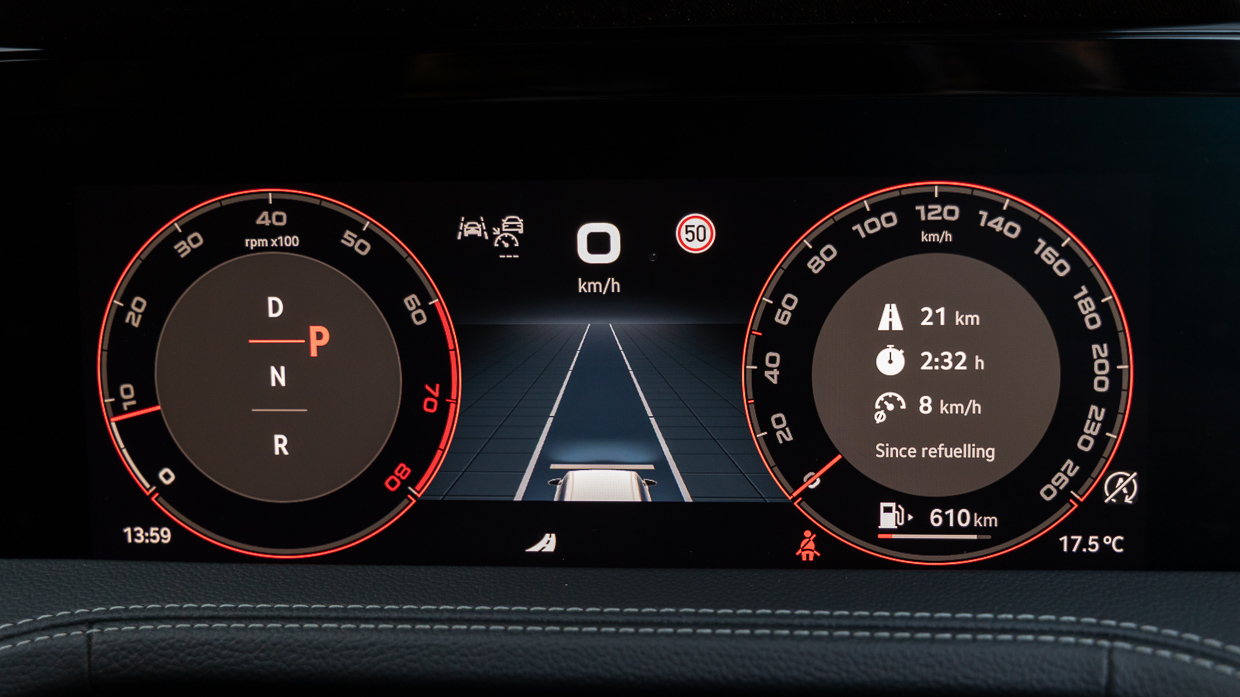
The Superb shares an excellent innovation with the Kodiaq — the ‘Smart dials’ that sit on the lower-middle dash and comprise three physical dials with digital displays.
The outer dials are dedicated to cabin temperature and seat heating/cooling; the middle dial can be configured to include multiple functions including driving modes, fan control, volume control, and even map scrolling.
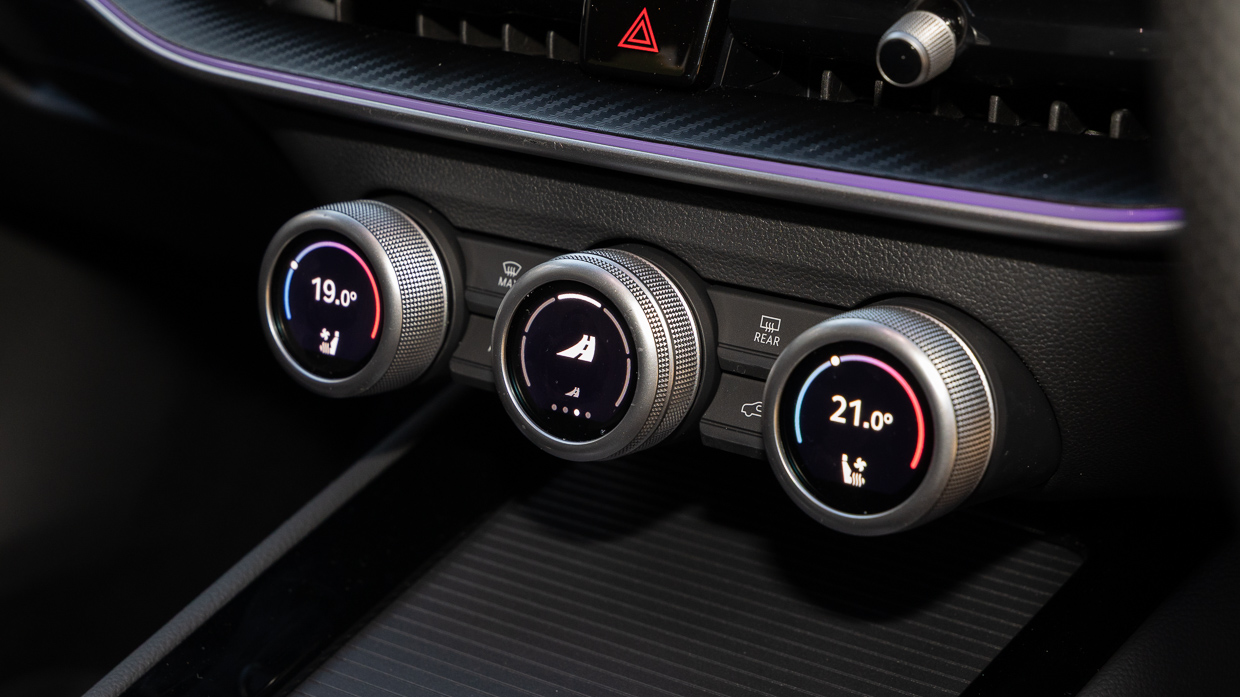
The only shame is that the tactility of the dials isn’t better — with rough edges and a loose feeling. The vent controls are also a bit short of quality, though switchgear elsewhere is of a good standard.
A long rear door accesses a rear seat that offers pseudo-limo amounts of legroom, foot space and headroom. Elongated door glass provides an excellent side view.
Rear-seat pampering doesn’t stop there. A standard ‘Night package’ brings a blankie (with its own felt pouch) and headrests with pull down ‘wings’ for resting your head against when you fancy a snooze. There are manual side blinds, too.
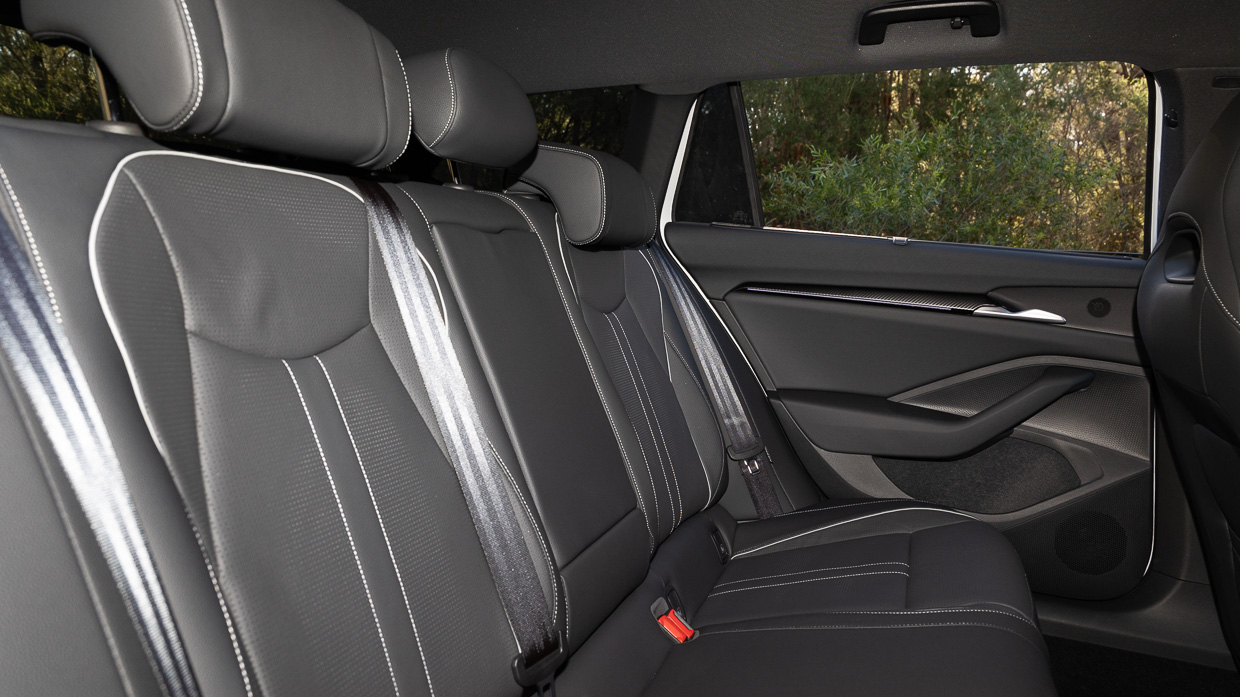
The centre armrest, in addition to cupholders, features a flip-out tablet-device holder, and the armrest extends outwards to improve the viewing angle.
A rear console panel features dedicated temp control for the rear seat as well as activation buttons for outboard seat heating.
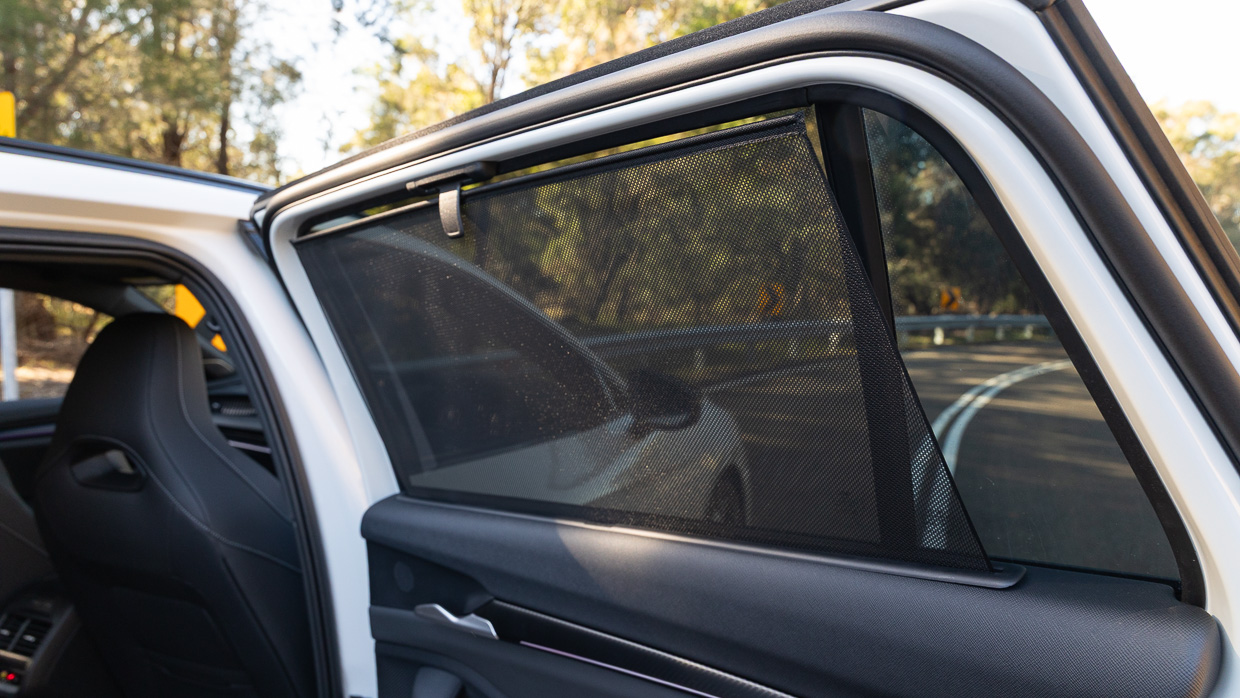
There’s also more USB-C ports back here, plus double pouches in each of the front seatbacks.
A chunky transmission tunnel just limits comfort for any adult forced into the centre middle seat.
Boot space must be good?
Absolutely. And so good that it deserves its own dedicated segment in this review.
The Superb’s extra vehicle length helps improve boot space in the sedan and wagon by between 20 and 30 litres.
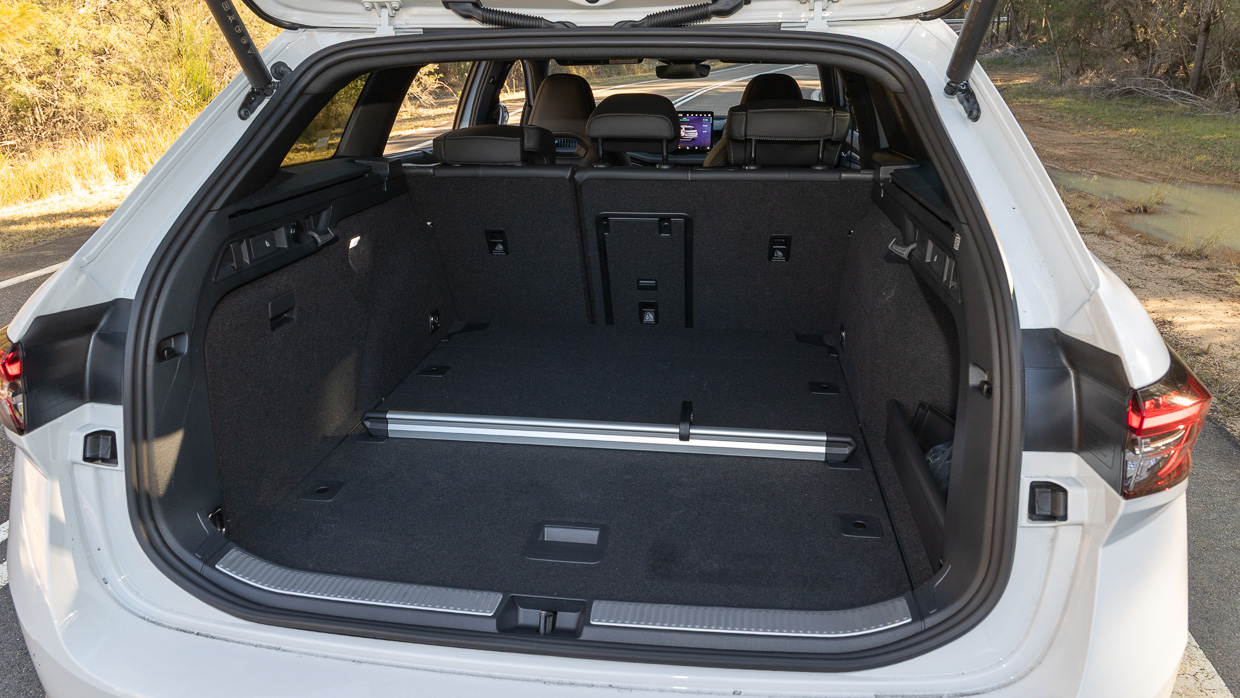
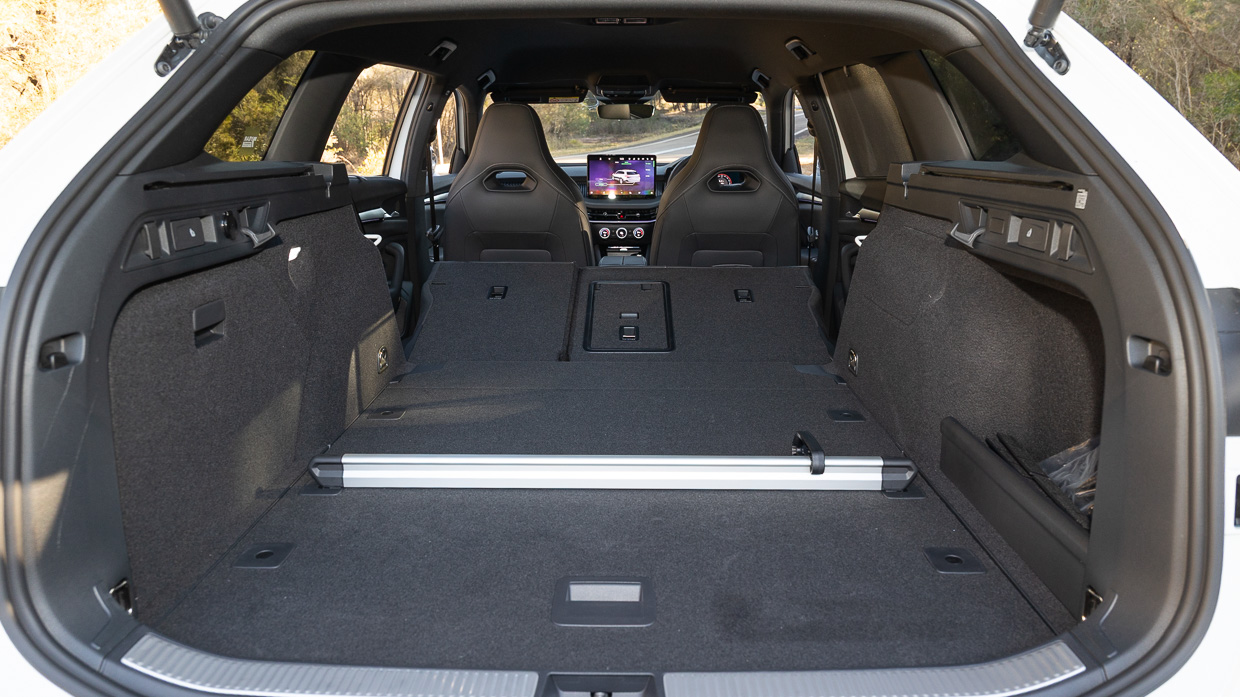
Skoda quotes a 589L capacity for the liftback sedan and 634L for the wagon, extending to 1795L and 1920L respectively with the rear seats folded down.
Focusing on the boot of the wagon we tested, the boot is both voluminous and versatile.
The cargo blind has one-touch retract, and when in place sits flush with the tailgate to ensure possessions remain hidden.
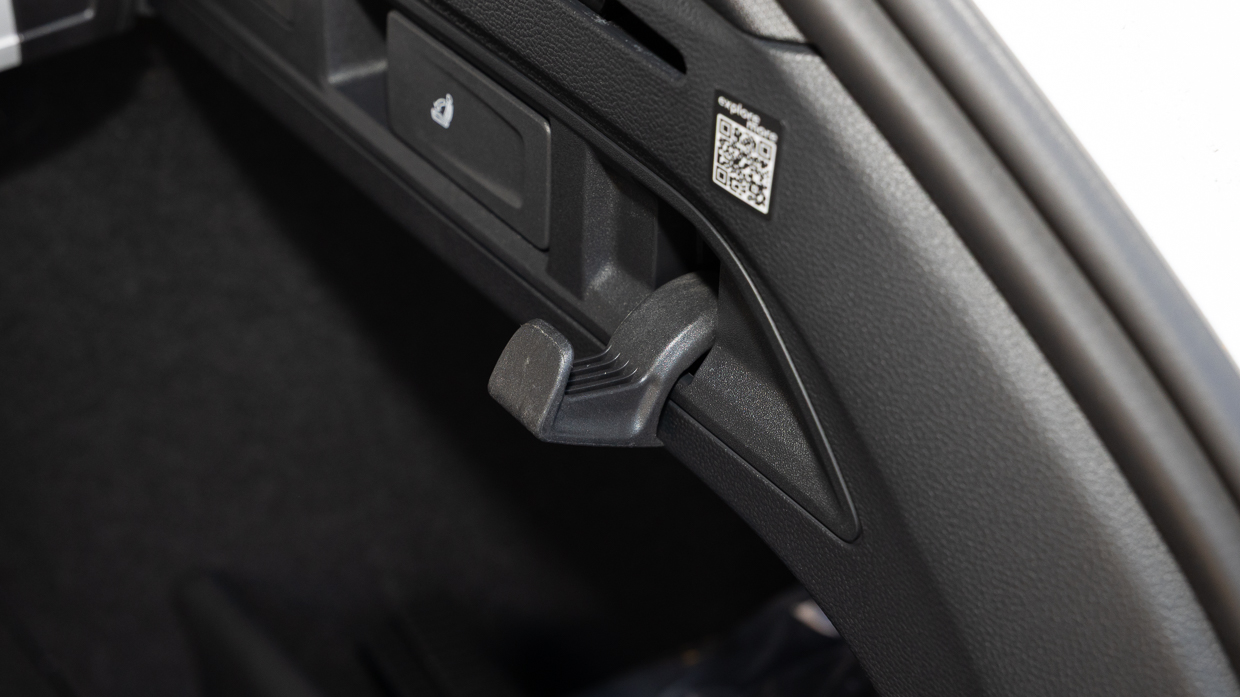
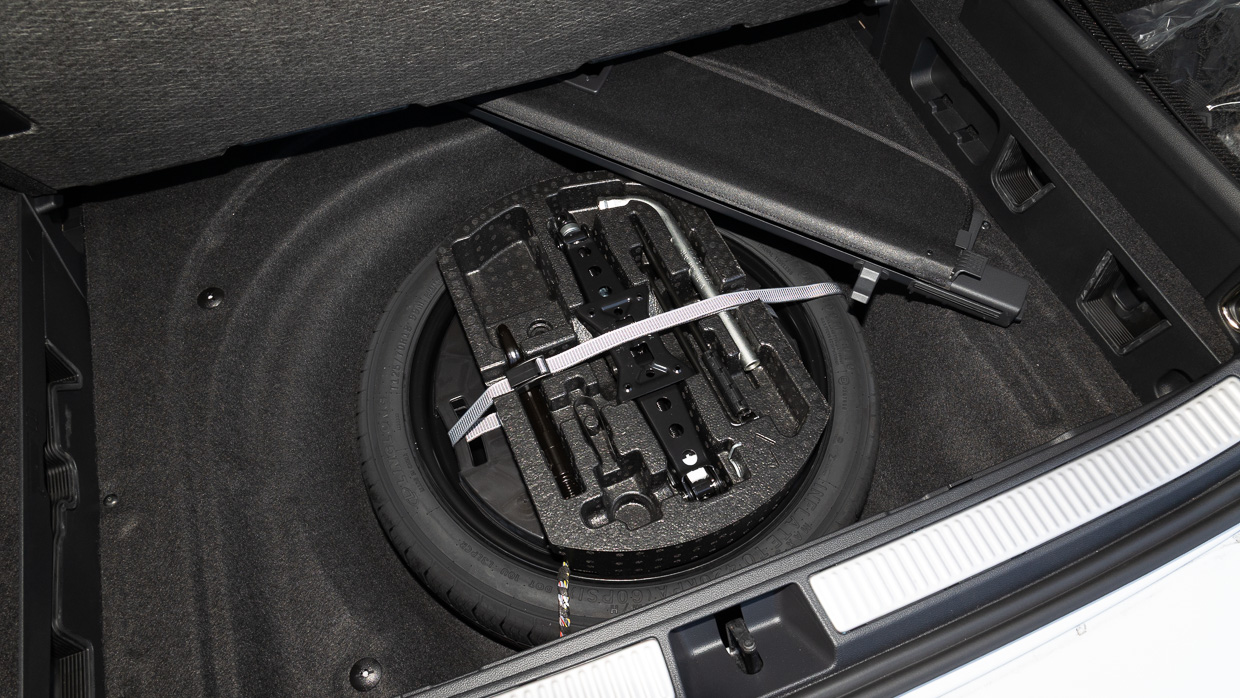
Removing the cargo blind (which can be stored under the boot floor) reveals another bar that can be pulled apart to create a mini storage hammock that can sit over luggage and useful for loose items such as jackets, gloves or beanies.
There’s also an extensive net system, a floor divider that can be moved between three positions, multiple pull-out bag hooks, side storage (covered on the left), and release levers for the rear seatbacks.
Not to mention, there’s also a spare wheel under the floor.
How does the Skoda Superb drive?
An adaptive suspension featuring dual-valve dampers is standard on the Superb.
The damping can be adjusted via a 15-stage slider on the touchscreen, which might be used once for the Individual driving mode set-up but is otherwise rather pointless when the driver can cycle through driving modes via the central ‘smart dial’.
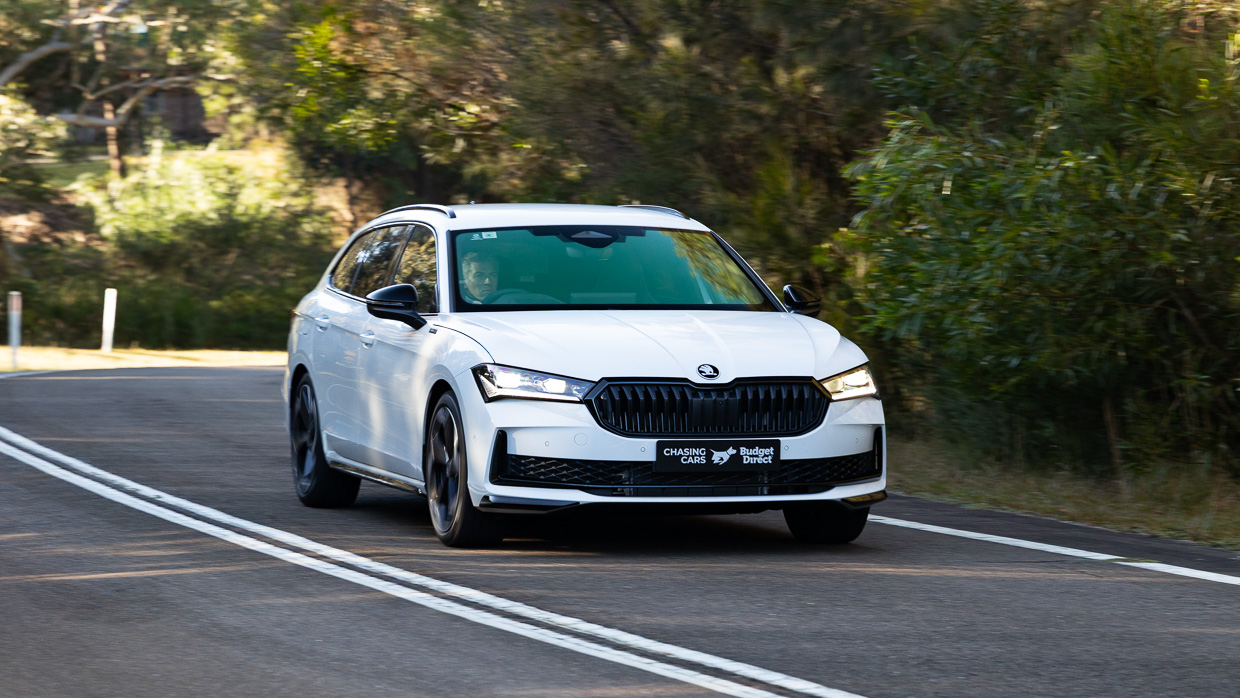
During our week with the Superb, we tended to switch between just two driving modes: Comfort and Sport.
While the Superb’s ride isn’t ultra-plush around town, not quite fully absorbing the sharpest bumps, it is generally settled — and that delivers more than sufficient comfort for everyday driving.
The suspension is at its most relaxed in Comfort mode on freeways, which contributed to an enjoyable three-hour drive from Canberra to Sydney as part of testing.
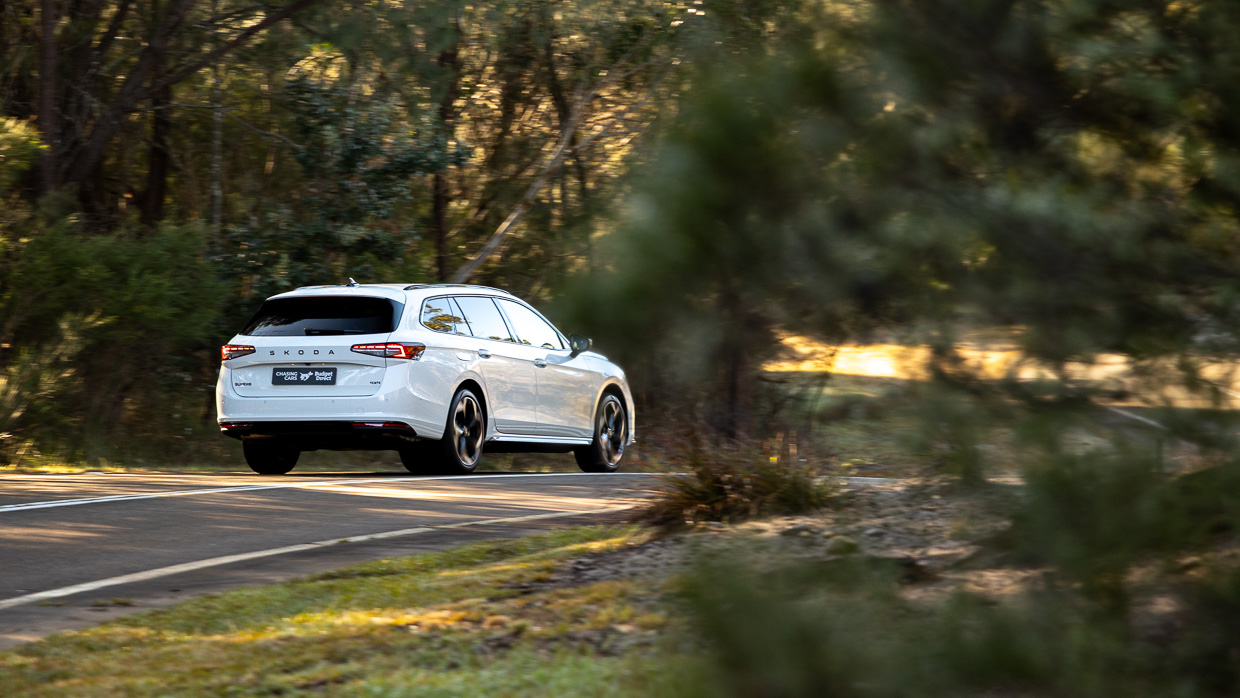
Cabin refinement is terrific at high speeds, too — the engine is unobtrusive and there’s minimal wind noise. The latter is aided by a slippery body shape with a 0.25 coefficient of drag (Cd); the sedan cuts through the air even more effectively with a 0.23Cd.
We sampled two Superbs wearing different rubber — Pirelli Cinturo and Goodyear Eagle F1 — and in both cases tyre rumble was at its most pronounced on coarse-chip country roads.
Engage Travel Assist via a steering wheel button and the Superb will guide itself along freeway lanes. As with similar systems, it won’t let you keep your hands off the wheel for too long though unlike some semi-autonomous steering set-ups it will allow you to rest your hands loosely on the steering wheel.
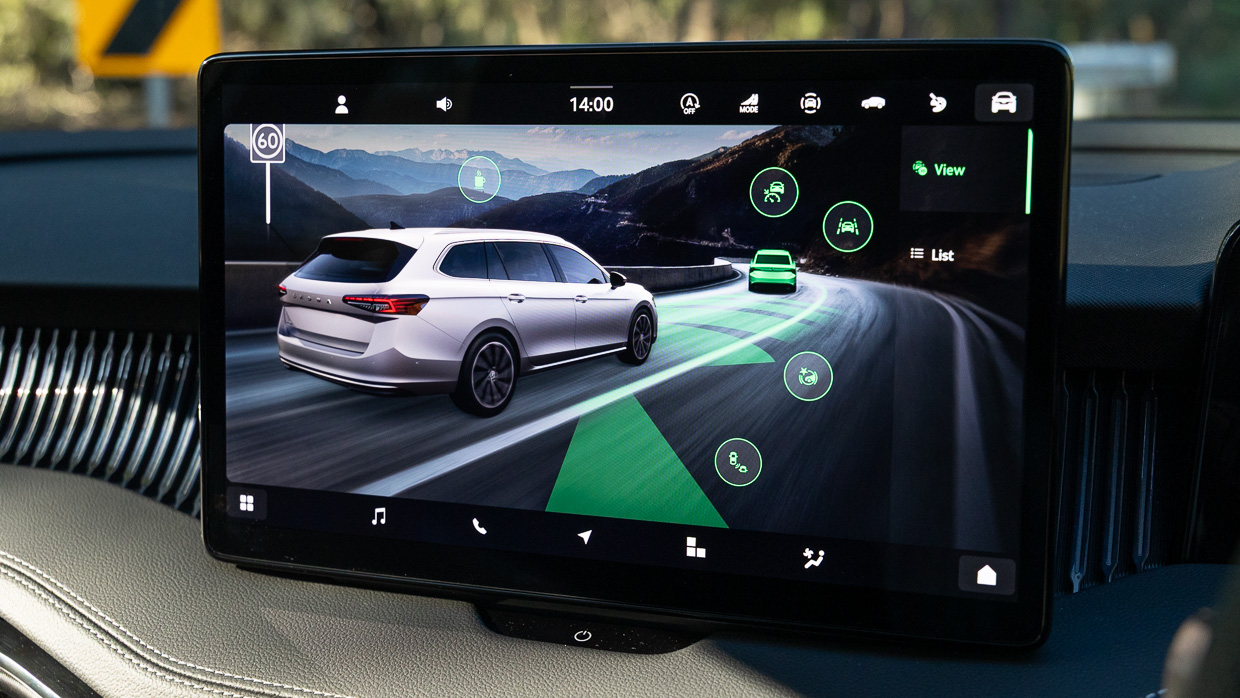
Select Sport mode and the big Skoda tightens up its body control to bring dynamics that are highly competent on twisting country roads and backed by strong tyre grip, and all-wheel-drive traction out of corners.
Handling is biased towards understeer but it’s predictable and also adjustable with a lift of the throttle.
There’s a willing partner under the bonnet, too. While Superbs of recent years have featured a detuned VW Golf R engine, this time the Skoda borrows from the Golf GTI hot-hatch.
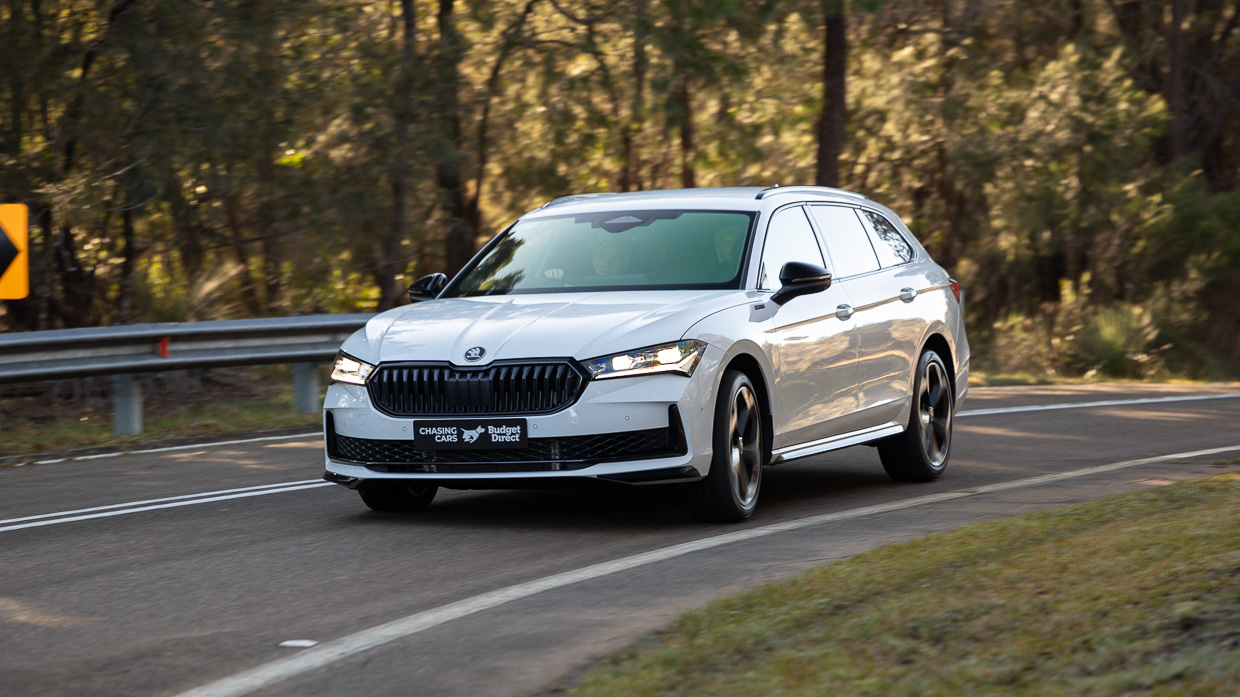
While this sees power drop from 206kW to 195kW, torque increases from 350 to 400Nm to boost driveability. (This is also 30Nm more than offered by the 2.0-litre turbo petrol in the GTI as well as Skoda’s Octavia RS.)
A switch from the older ‘DQ250’ six-speed DSG to newer seven-speed dual-clutch improves drivability. The seven-speed DSG can still have its moments of slight hesitation when asking for some hurried acceleration, though it’s a minor vice that’s no deal-breaker.
There are paddle levers for pseudo-manual gearchanges, which are worthwhile to enjoy the drivetrain at its sharpest.
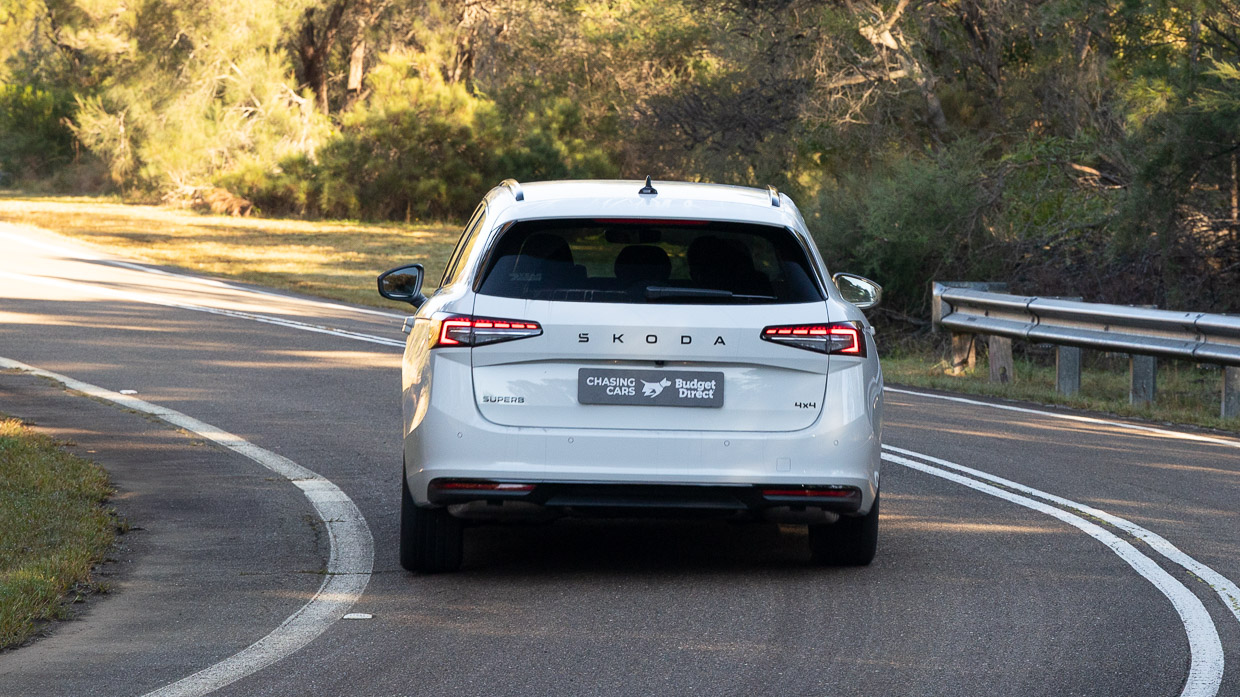
In everyday driving, the Superb’s throttle response is excellent even in the more passive Comfort driving mode.
The Superb comes with a faster 0-100km/h claim of 5.6 seconds (sedan) or 5.7 seconds (wagon), both a few-tenths quicker than their respective predecessors. More importantly for normal driving, the Skoda has plenty of in-gear thrust for quick overtakes.
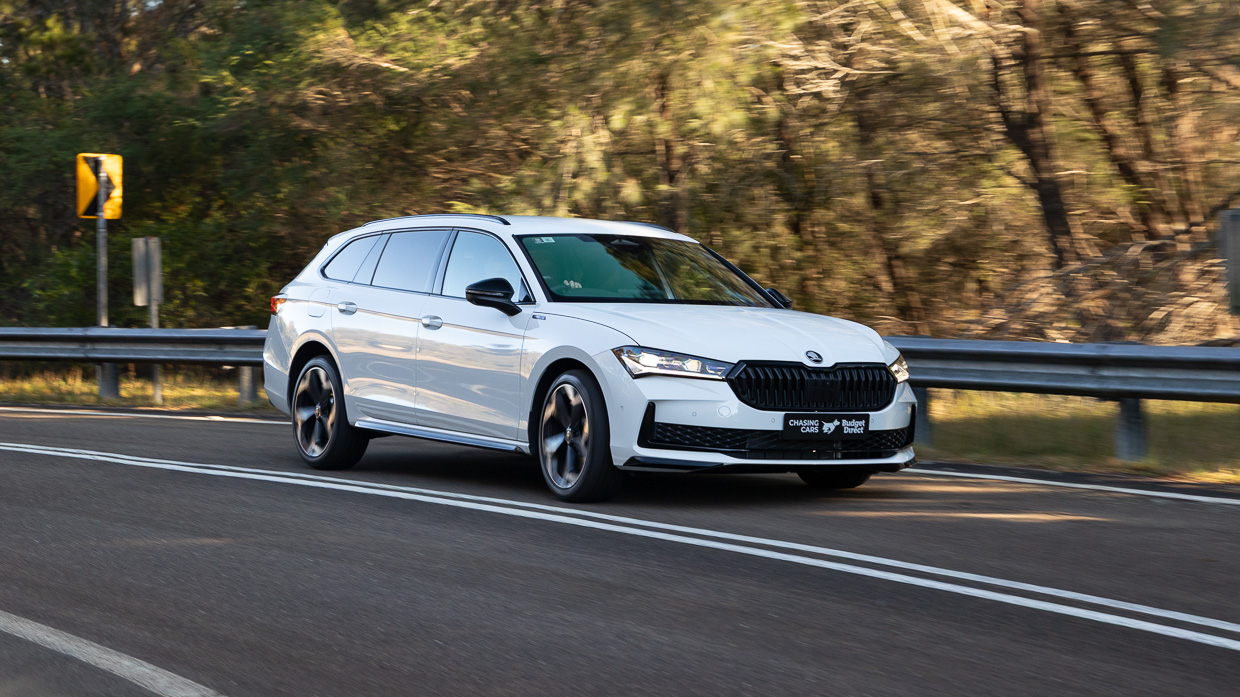
Interestingly, the Superb’s body has narrowed by 15mm — opposing the trend for wider cars. That all helps on narrow streets, though generally this 4.9-metre-long car doesn’t feel huge on the road. The turning circle (11.1 metres) is also good for a car of this length.
The wagon offers particularly excellent rear-view vision.
Is the 2025 Skoda Superb a safe car?
The Superb has yet to be crash-tested by ANCAP locally, though the car was given five stars (with high sub-category scores) by Euro NCAP based on testing on its structurally identical twin, the VW Passat.
Previous Superbs were given maximum ratings by ANCAP and there’s no obvious reason the latest model wouldn’t follow suit.
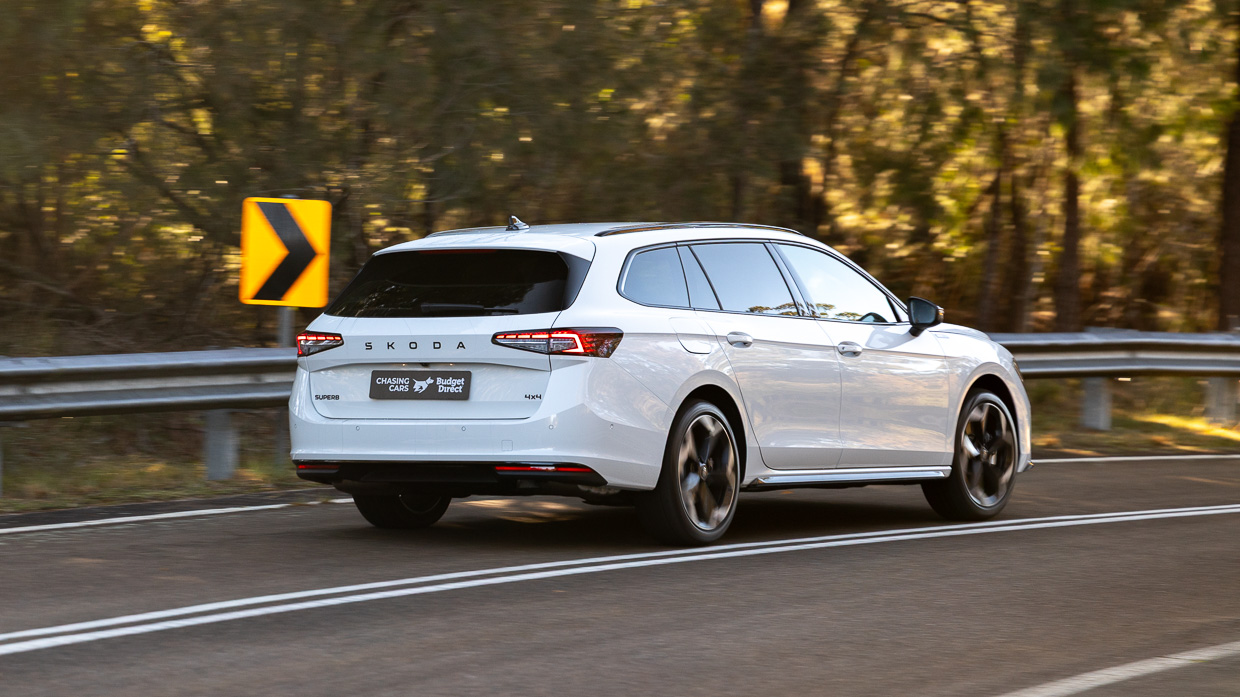
Standard safety inclusions for the Skoda Superb are:
- Lane-keep assist with adaptive lane guidance
- 10 airbags, including centre front airbag
- Emergency steering assist
- Driver fatigue monitoring
- Traffic sign recognition (including predictive adaptive cruise control)
- Surround-view camera
- Front/rear parking sensors
- Vehicle exit warning
- Turn assist
- Side assist (blind spot monitoring)
- Front assist (autonomous emergency braking)
- Tyre pressure monitoring
What are the Superb’s ownership costs?
Skoda’s factory warranty is seven years, two years longer than the industry average.
A first year service costs $473, or Superb buyers can opt for pre-paid service packs — $3000 for five years or $3700 for seven years. That works out at $600 or $529 per year, respectively. Service intervals for the Superb are every 12 months or 15,000km.
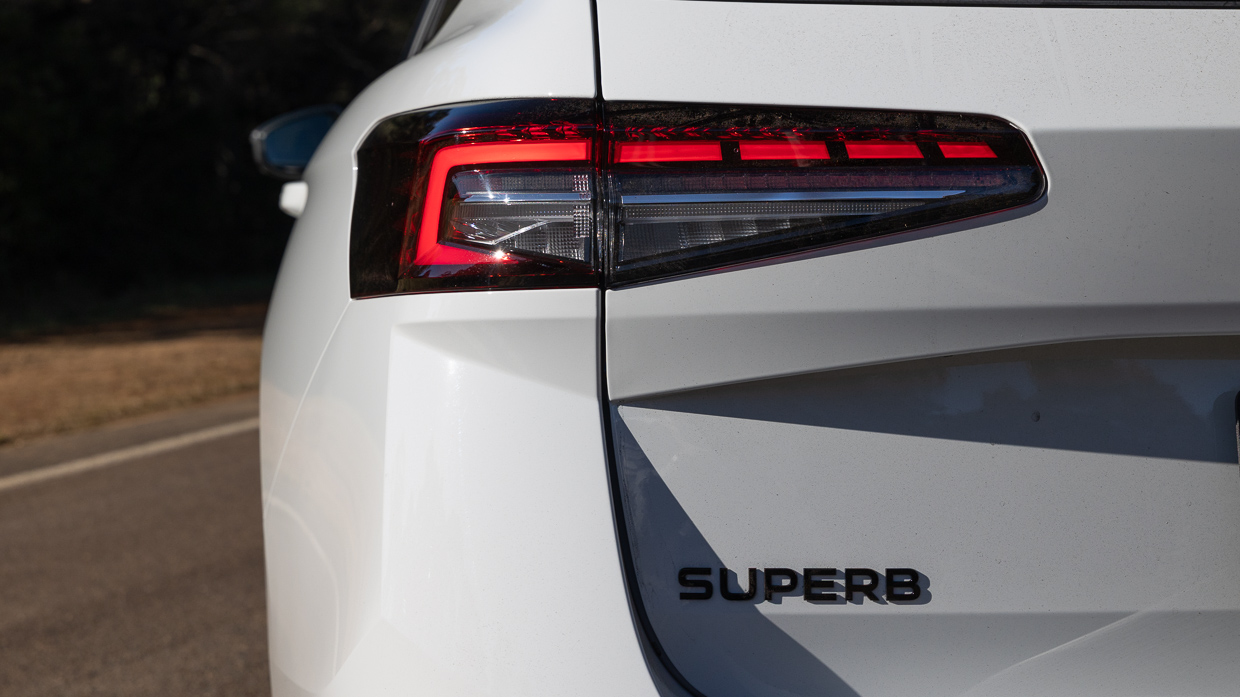
For comparison, a Lexus ES costs $595 per annual visit and a Honda Accord is just $199 annually for up to five years.
Official fuel consumption has improved slightly from the previous model — down to 7.7 litres per 100km for the sedan or 7.8L/100km for the wagon. How close owners get to those figures in the real world will depend on how often they jump on freeways.
We averaged 6.5L/100km on a drive from Canberra to Sydney (after some spirited steering), but, after refueling a trip computer reset this increased to 11.2L/100km after a couple of days of daily commuting.
The honest verdict on the 2025 Skoda Superb
The Superb is arguably the world’s most boldly badged car. Yet while previous models have been merely good — save for the wonderful Scout — this fourth-generation model has never been closer to living up to the name.
There are some niggles such as the urban fuel consumption, some interior/switchgear quality glitches, and servicing costs that are a touch on the high side.
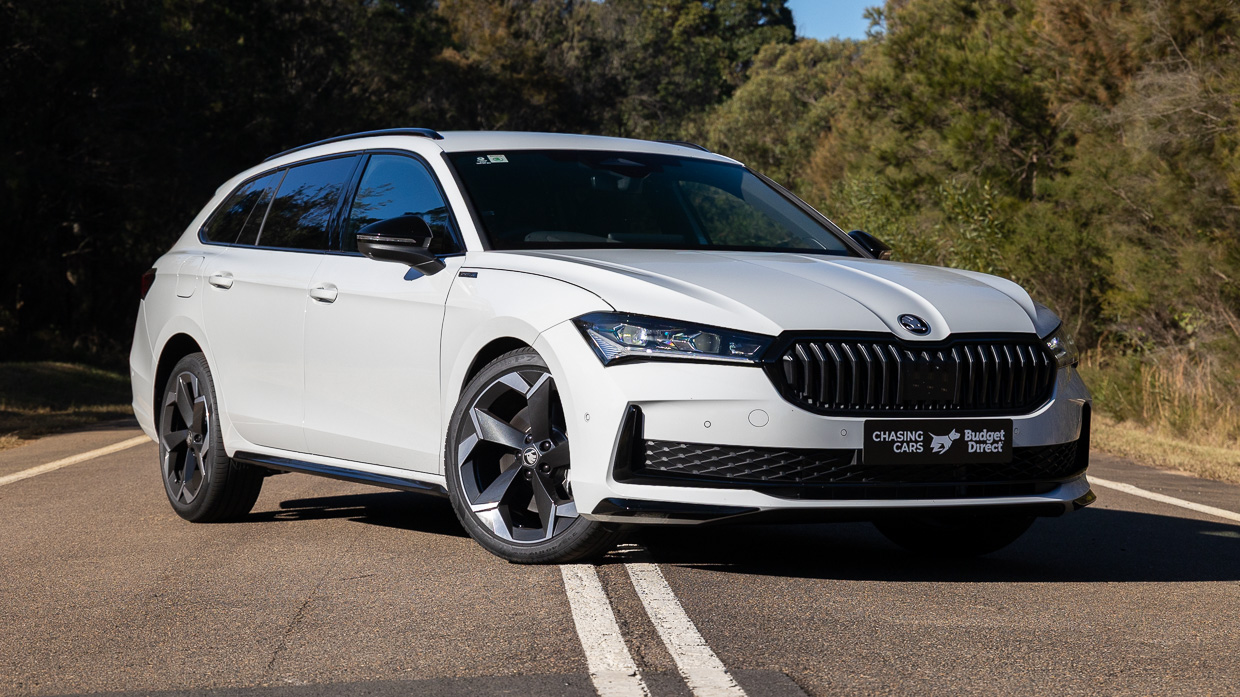
Overall, though, the Skoda Superb is ridiculously easy to recommend for any buyers willing to forgo an SUV for a less trendy large car. It’s stacked with kit as well as surprise-and-delight features, it’s incredibly spacious inside including its voluminous and versatile boot, and it’s a mostly refined driving experience.
And, to be fair, Skoda Excellent doesn’t quite have the same ring to it.
Overall rating
Overall rating
8.5
Drivability
9.0
Interior
8.5
Running costs
Good
Chasing more Superb?
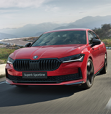
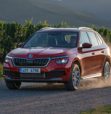
Often compared with
Ford Ranger PHEV 2025: Australian first drive
4 months ago

Lower on specs, bigger on price – can the long-awaited plug-in hybrid version of Ford’s big-selling 4×4 ute compete with Chinese rivals?
Good points
- On and off-road refinement
- Nice interior layout
- Australian designed and engineered
- Simple mechanical latching tailgate
Needs work
- Limited EV range
- Slow charging
- Can’t fit an aftermarket tray or canopy
- Most expensive PHEV in its class
First and foremost, the 2025 Ford Ranger PHEV has been designed and engineered in Australia, which is confidence-building for what is essentially a new product. It really does say a lot. But it would be kind of nuts to think PHEV ute rivals in BYD Shark 6 and GWM Cannon Alpha haven’t received loads of local development too.
This level of refinement though is main reason Ford are keen to get us behind the wheel and experience the Ranger PHEV. Not just judge it based on specs.
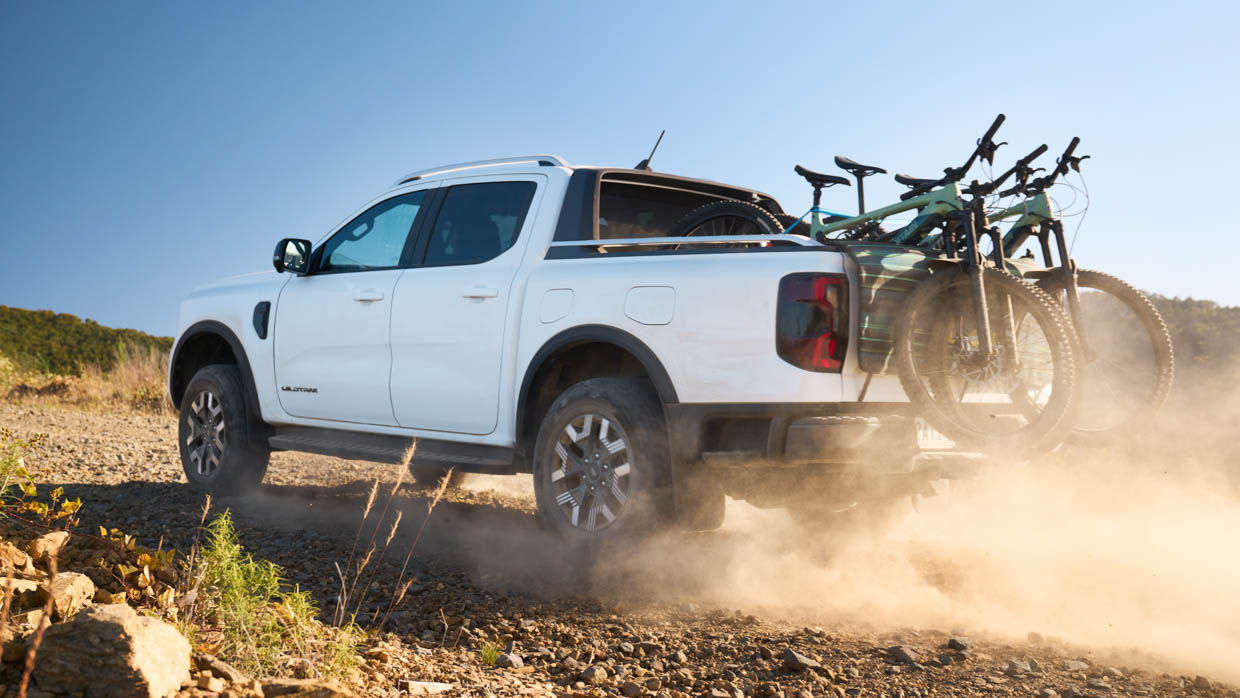
Speaking of specs, we’ve already put together a specs battle comparing the Ranger, BYD Shark 6 and GWM Cannon Alpha PHEVs on paper to see how they stack up.
When we do just look at the scoreboard, however, it is clear to see on paper the Ranger PHEV comes third place in a race of three. Especially being the most expensive vehicle in class, weighing against it during these challenging economic conditions.
Can the proven ride quality and handling package of the locally calibrated Ranger be enough to beat the Chinese competition away with a dual-cab shaped stick? That’s what we flew to Melbourne to drive the much anticipated plug-in Ranger for a few days to find out.
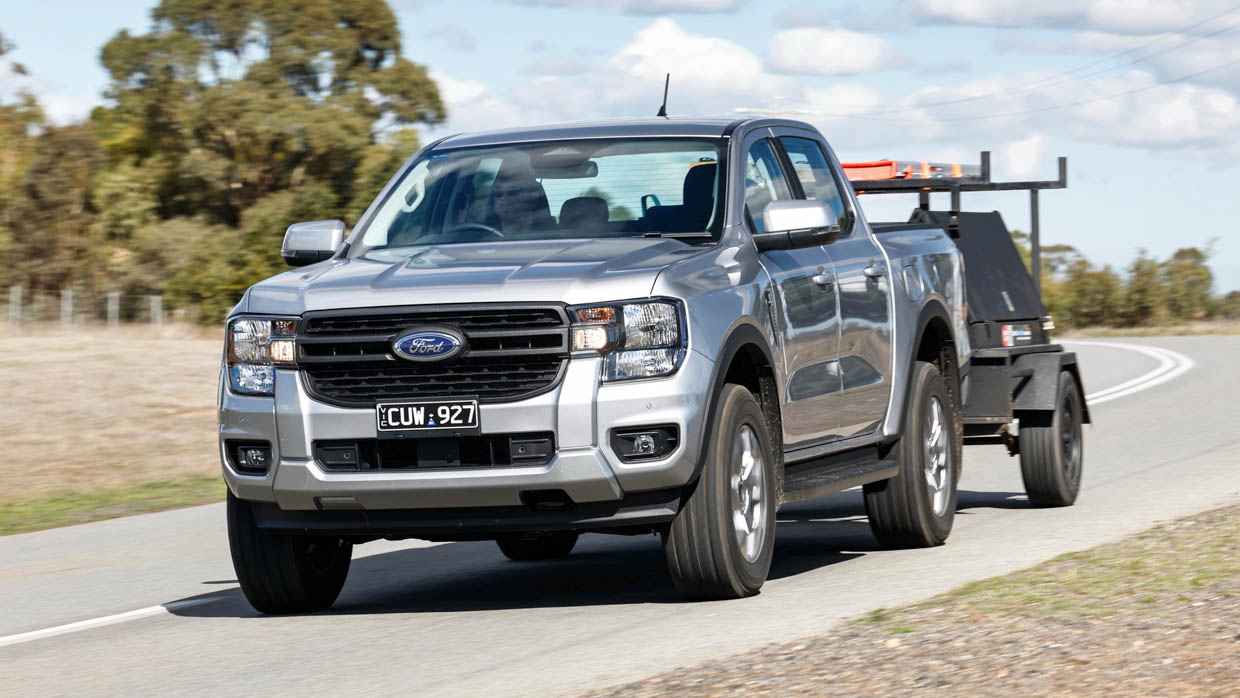
Ford says it’s delivered a petrol-electric ute with more power and more torque while offering better fuel economy than any diesel Ranger alternative.
Towing, payload and off-road ability are, Ford says, key to the Ranger PHEV…which is a similar song that GWM was singing at the launch of its Cannon Alpha PHEV competitor.
So, what’s the why for this model? To set the scene, we thought it would be prudent to provide some ownership stats. Ford has collected data from over 10,000 Ranger owners’ use patterns, which starts with the official suggestion that 59 percent of owners use 4A mode (four-wheel-drive Auto.)
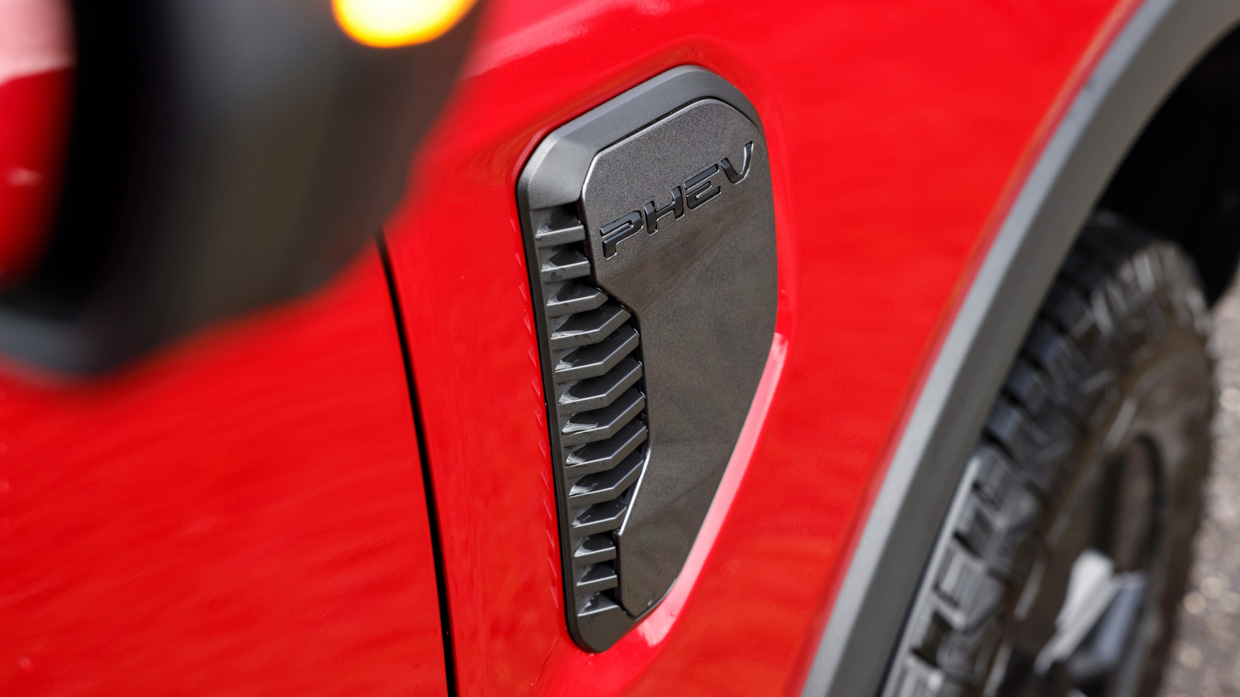
A further 45 percent of owners have engaged 4×4 high-range, while 11 percent used low-range 4×4, which is much lower figure than we expected.
What this really shows what the majority of end users are doing with these vehicles; sticking to dirt roads or sand driving when out exploring. Something we found extremely interesting, too, is that 45 percent have used the factory rear-locking differential.
But the biggest number relates to towing, with 80 percent of Ranger owners hitching up something to tow during their ownership.
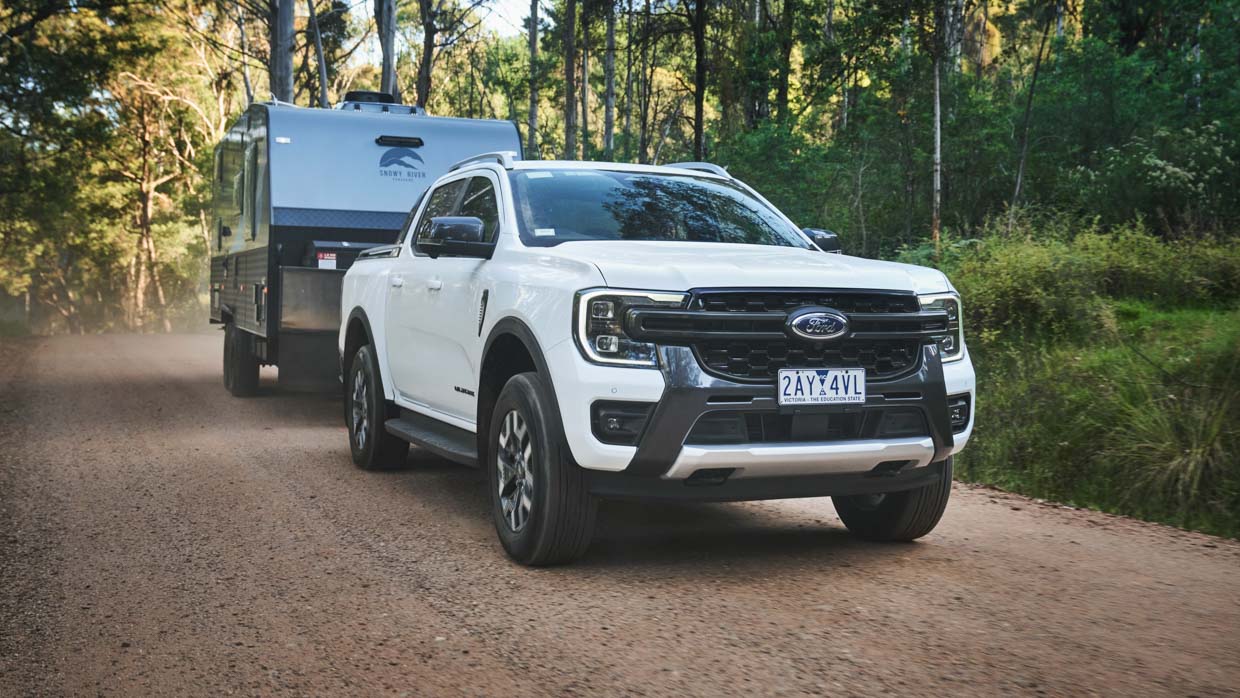
So simply using these stats, it’s easy to determine Ford’s design approach for this PHEV ute. It has to be able to tow at a class-matching number (3500kg), while offering decent GVM (3500kg) and GCM (6580kg). Payload is up to 973kg (in XLT trim).
It has to be able to go off-road, especially as half the owners tend to use the differential lock when venturing off into the elements. And it also has to be comfortable, something the diesel-powered Ranger does really well.
So why a PHEV? Because 518,2421 Rangers have been sold around the world, making it the second-best-selling mid-size 4×4 ute. It’s a vehicle sold in over 180 markets and on every continent except Antartica. Ford even declared a record year for 2024 selling 38,945 globally, which is 12 percent up on 2023 figures.
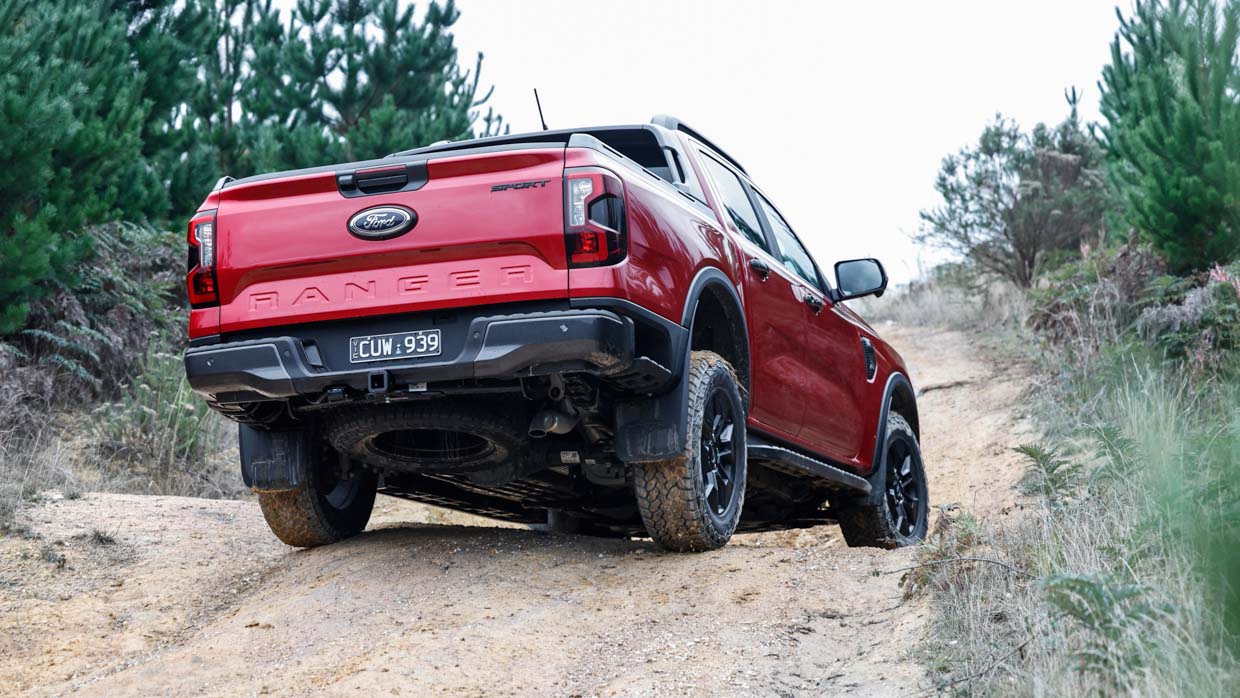
Ranger is also the number two selling ute in Australia, so this PHEV model makes sense as the numbers are there. But it also has a big job to do with reputation on the line in a vastly growing and competitive space.
Starting with off-road credentials, there is no front-differential lock in the Ranger PHEV, and the traction control system doesn’t have a Rock-Mode like the Raptor does.
Rival GWM Cannon Alpha takes the lead when it comes to off-road ability out of the packet with front and rear lockers and a more aggressive traction control system.
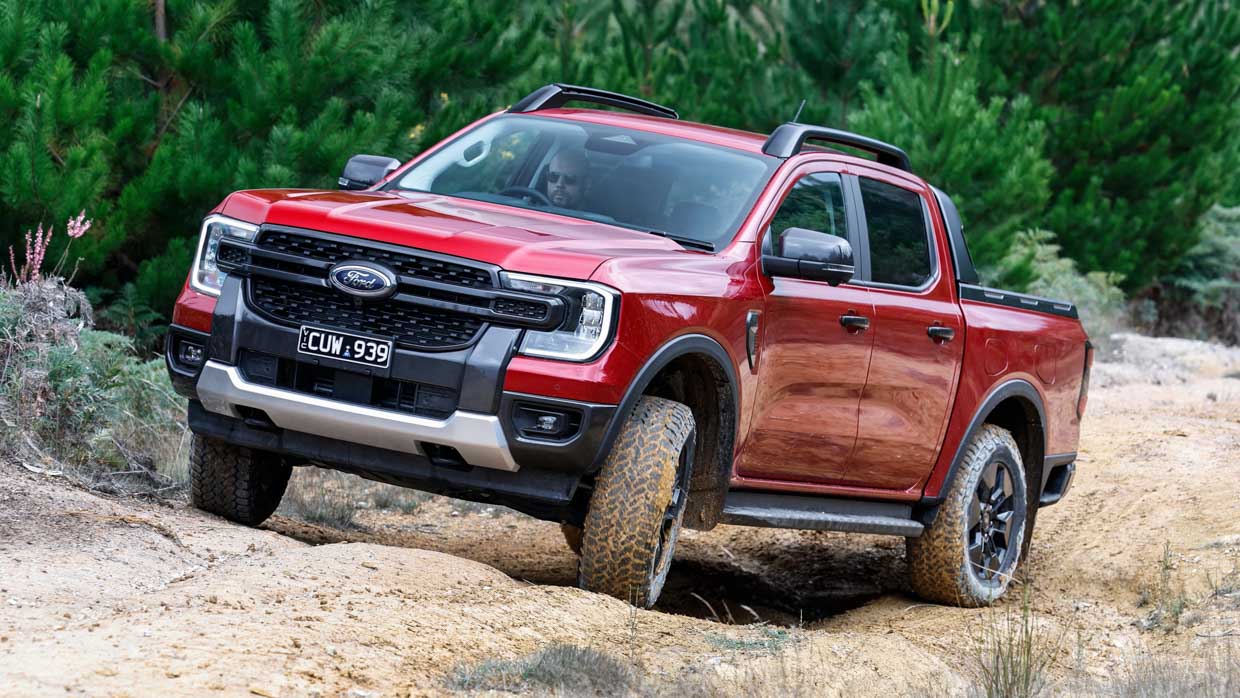
Traction control is not cut to the Rangers front axles when the locker is engaged, at least, which is a nice touch when it comes to off-road ability. Having additional traction at your disposal, while retaining the ability to steer easily is just what you want.
Unlike the coil-sprung Cannon Alpha, the Ranger PHEV has stuck with traditional leaf springs in the rear. But while the GWM doesn’t (yet) feel like a finished vehicle, Ford Ranger PHEV, at least in the Sport variant ($75,990 list) we tested, does feel much more complete.
I’d go so far as to say it feels even more refined than the ICE-powered Ranger line-up, which is the most refined mid-size 4×4 dual-cab on sale in Australia.
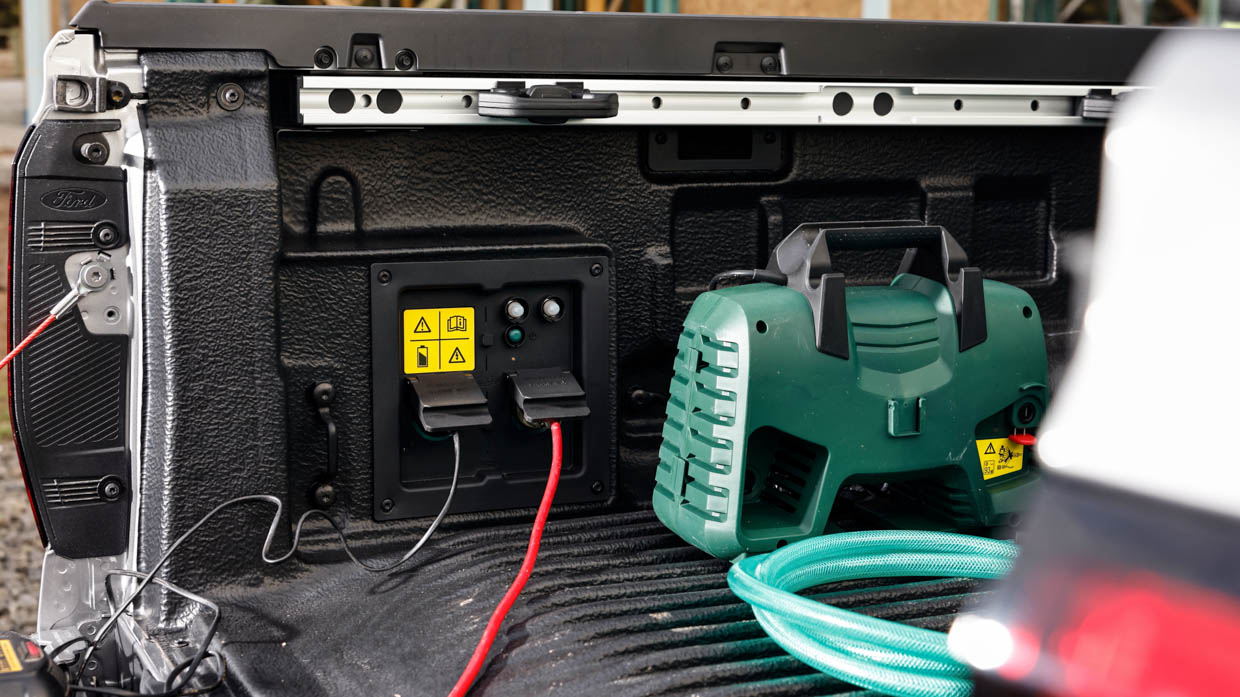
Power wise the PHEV Ranger boasts a claimed combined max output figure of 207kW with 697Nm, underpinned by its 138kW turbocharged 2.3-litre petrol EcoBoost engine: a first cousin to the engine used in the Ford Mustang (among others.)
Then there’s an additional 75kW electric motor paired to an 11.8kWh battery mounted underneath the tub area, directly to the chassis (an important point to note, which we will elaborate on later on). A 70-litre fuel tank is also standard fitment.
Kudos to Ford for managing to keep a spare wheel and tyre in the more traditional spot mounted under the tray, even with batteries occupying the vast majority of this space. It naturally reduces ground clearance, but it’s a neater solution than others. GWM (with its ute’s spare in the tub) please take note…
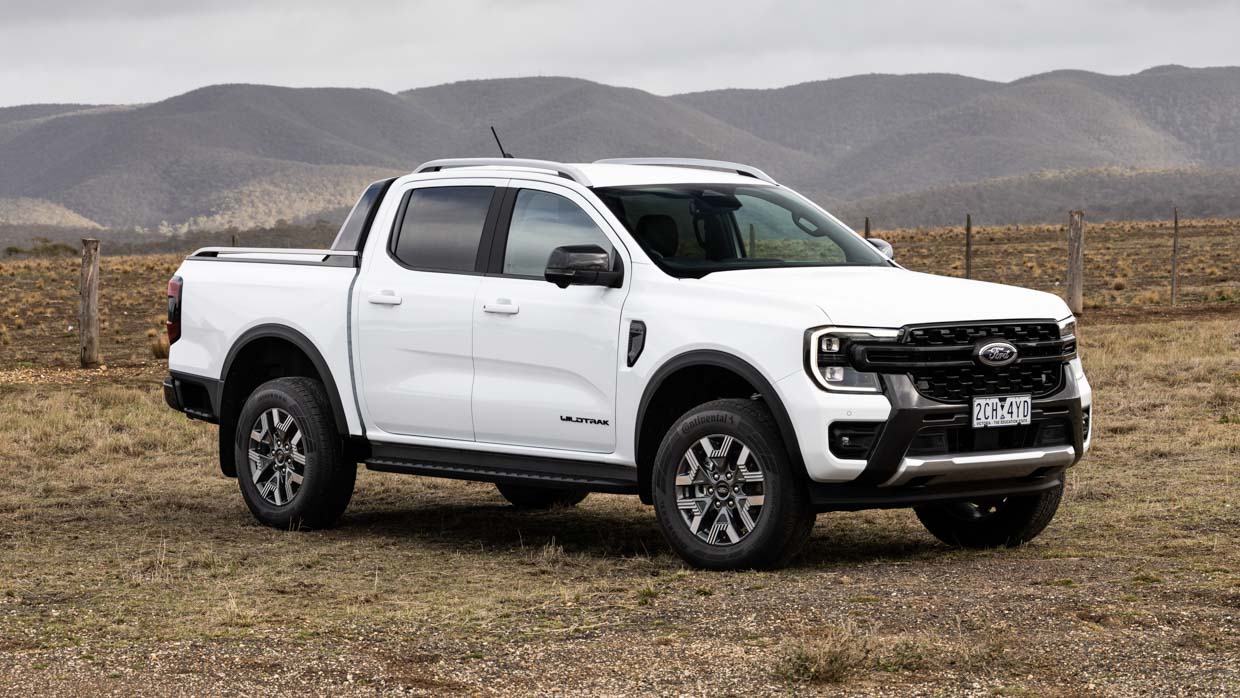
It’s a surprise to nobody, considering how many Ranger owners tow, that Ford has included their same towing technology featured in both the F-150 and diesel Ranger.
This suite includes Pro-Trailer Back Up assistance on top spec models (optional on Sport), Dedicated Tow/Haul mode, Integrated Trailer Brake Control, Trailer Sway Control, Trailer Blind Spot Monitoring, Trailer Light Check and the information Towing Checklist.
That’s quite a lot of technology that is genuinely helpful in the real world. I’ve said it before, and I’ll say it again, towing is serious business. This is the kind of tech that will help save lives.
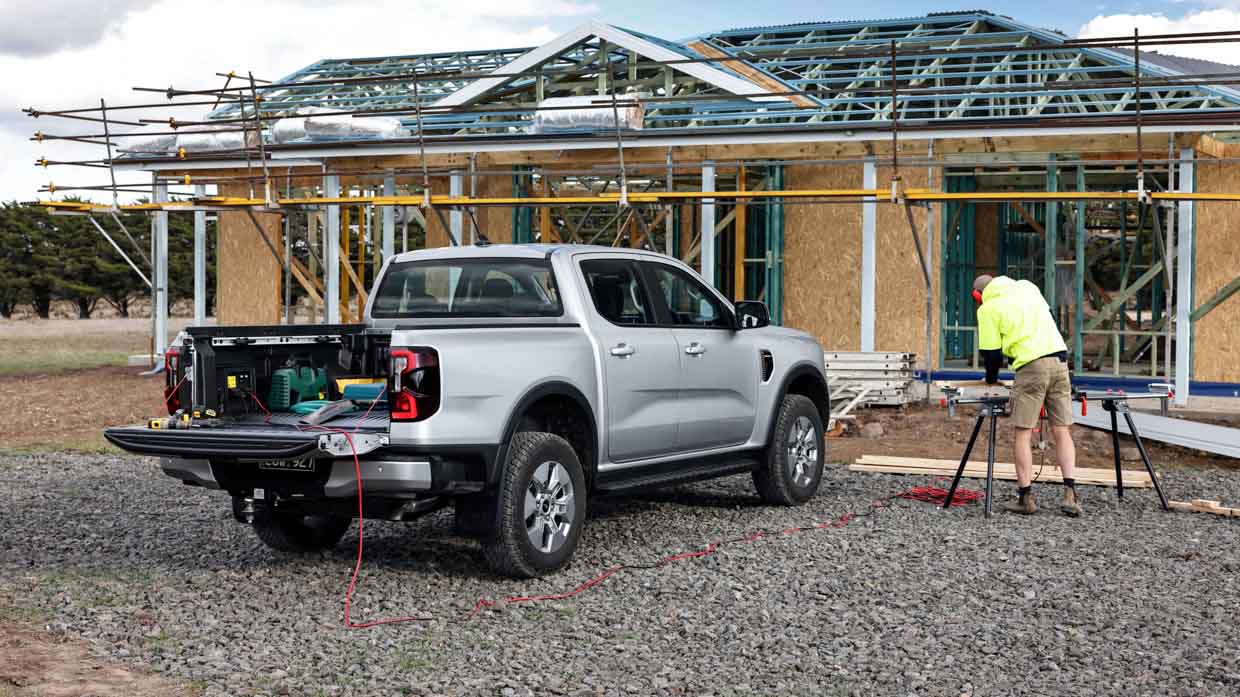
Where I can see room for improvement for the Ranger PHEV though, is the fact there’s no fast charge battery system. This vehicle is designed to be charged at home overnight on a 10amp socket, from a supplied 8.0amp charger. You can connect it to some public chargers, but you’ll be wasting your time really.
Mode wise, the selection includes ‘Auto EV’ that’s ideal for daily driving, ‘EV Now’ for all-electric drive, ‘EV Later’ which saves battery and electric drive for a later date, and ‘EV Charge’ where the battery is forced charged from the engine.
When driving in EV Charge Mode, it took about two hours to replenish the battery system, which Ford claims has an EV range of 49km – half that of key competitors. We did play around with this during the launch event, but will hold back on providing an tested figure here until we can get it into the Chasing Cars garage.
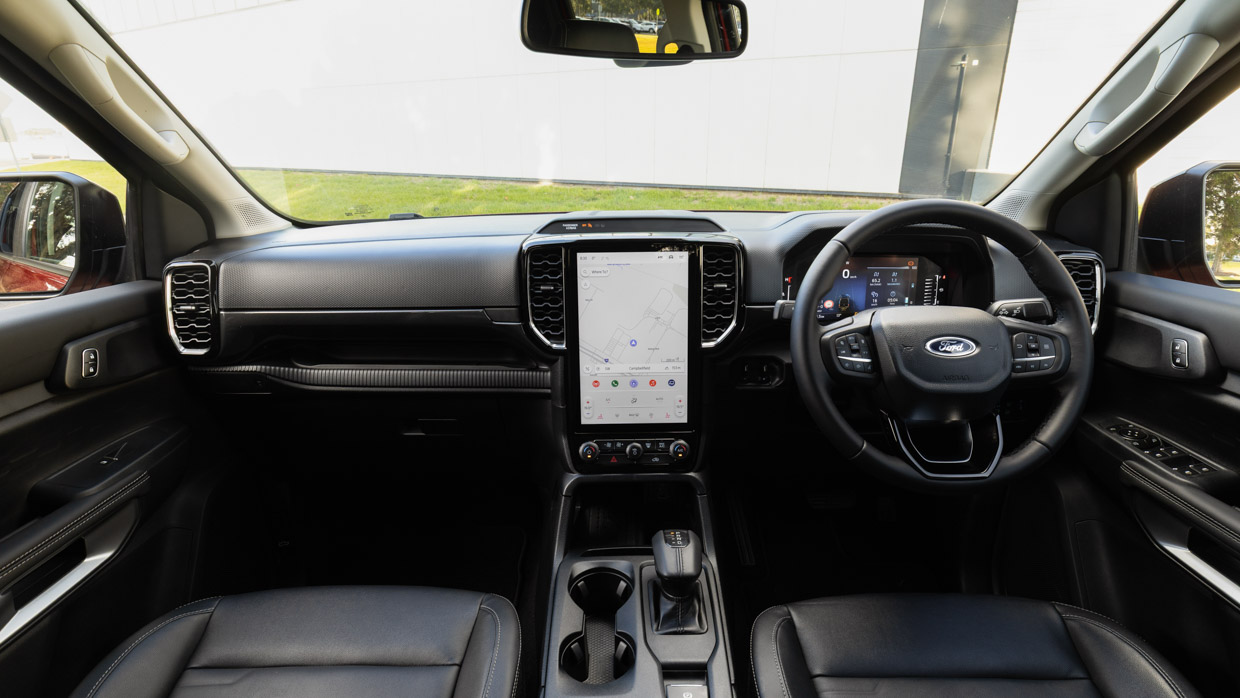
In the transmission department, there’s a new Hybrid Transmission (MHT) unit that integrates an E-Motor between the engine and transmission. With 10-speeds available, you have a gear ratio for all occasions, especially when combined with low-range reduction available in the transfer case, which seems to take a little while longer to engage than a diesel Ranger.
Now, this is a big one – if you remember a few paragraphs earlier, we mentioned the EV battery is directly chassis mounted, not tub mounted. For reasons surrounding vital factory wires, sensors and PHEV fuel venting system requirements, Ford is not recommending the installation of an aftermarket canopy service body or tray.
Rivals? GWM is happy for you to do so with the Cannon Alpha, but BYD says it will void your warranty if you attempt this modification. So only one-from-three manufacturers are on-board. This is a big concern that we hope will change in the future.
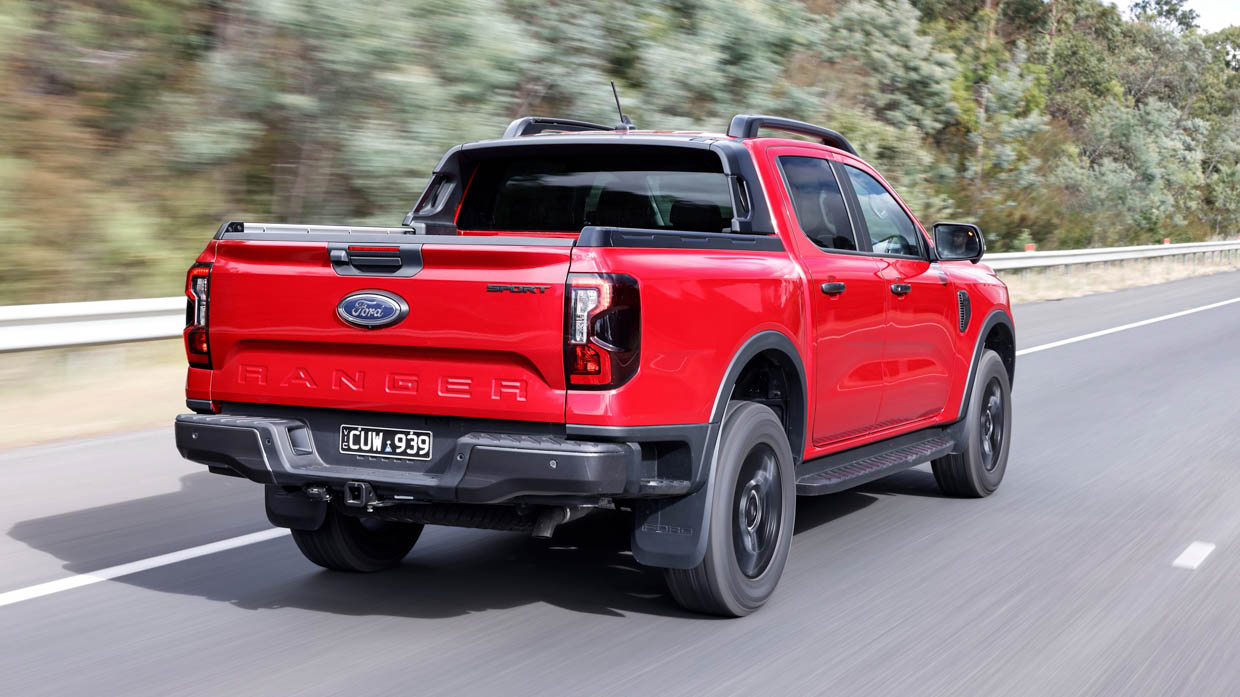
Now, Ford didn’t say it will void the warranty, rather that if a warranty issue occurred to any system that is related to the fitment of an aftermarket tray or canopy, things would get awkward for you at the warranty claim desk. For now, we wouldn’t attempt it.
This is an oversight in my opinion, as ute owners love to modify their vehicles hate being told they can’t. This fact alone will hurt Ranger PHEV sales until a Ford developed solution is made available. No tray or canopy package from Ford has been promised at this stage, fingers crossed they do offer a solution.
It has been confirmed that a full suite of off-road accessories will be factory offered, but these are in the process of being finalised and Ford wouldn’t dive into this further. I’d assume Ford’s partnership with Australian 4×4 accessory giant ARB would likely continue, however tweaks are still needed it seems.
Overall, I can’t really see what problem this vehicles solves. The Ranger PHEV is a hybrid of a hybrid. For my own needs it doesn’t offer enough EV range to get to work. The BYD Shark 6 just does, and the GWM Cannon Alpha will comfortably get me to the Chasing Cars office from my mountain perch.
For many a V6 diesel Ranger will make more sense. And the spare change of at least $3150 (depending on PHEV specs) goes some way towards a 12V battery system for camping and powering tools. Which is the main ace up the Ranger PHEV sleeve, a factory-provided rechargeable battery bank for camping requirements and powering tools.
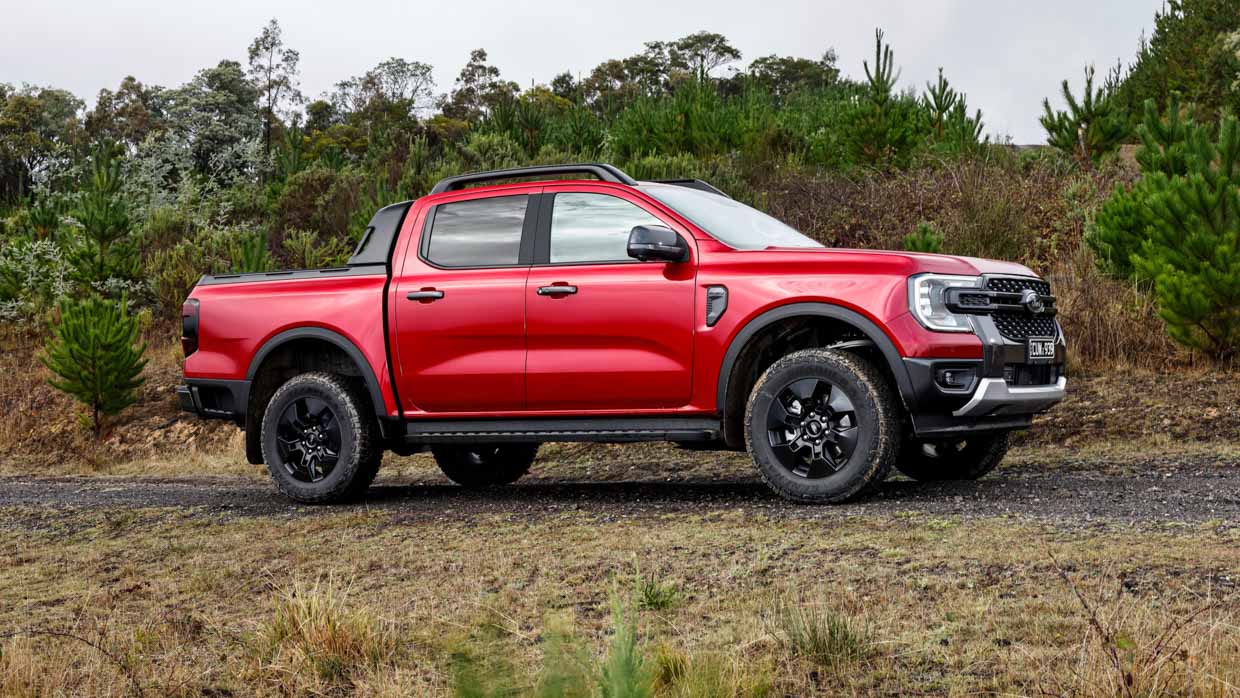
It must be said though, the PHEV Ranger does stay true to DNA, and it still feels and drives very much like a Ford Ranger, which for a long time has been the best road handling ute on the market. So this PHEV Ranger it’s true to form.
But, geez, the competition is nipping at Ford’s heels, with better specs and lower pricing after comparing apples with apples. With this emerging wave of PHEV petrol-electric utes, we’re certainly living in increasingly interesting times.



